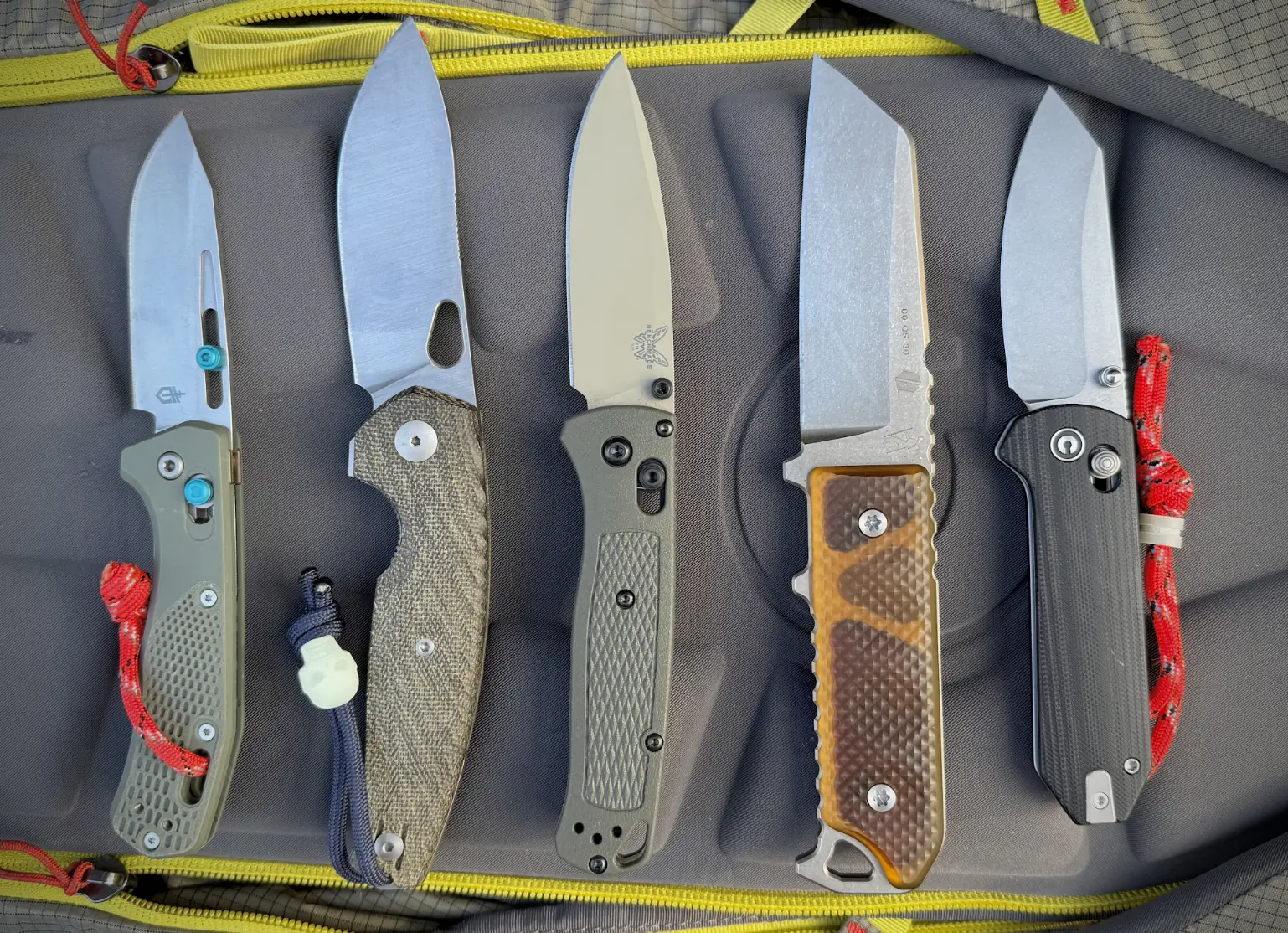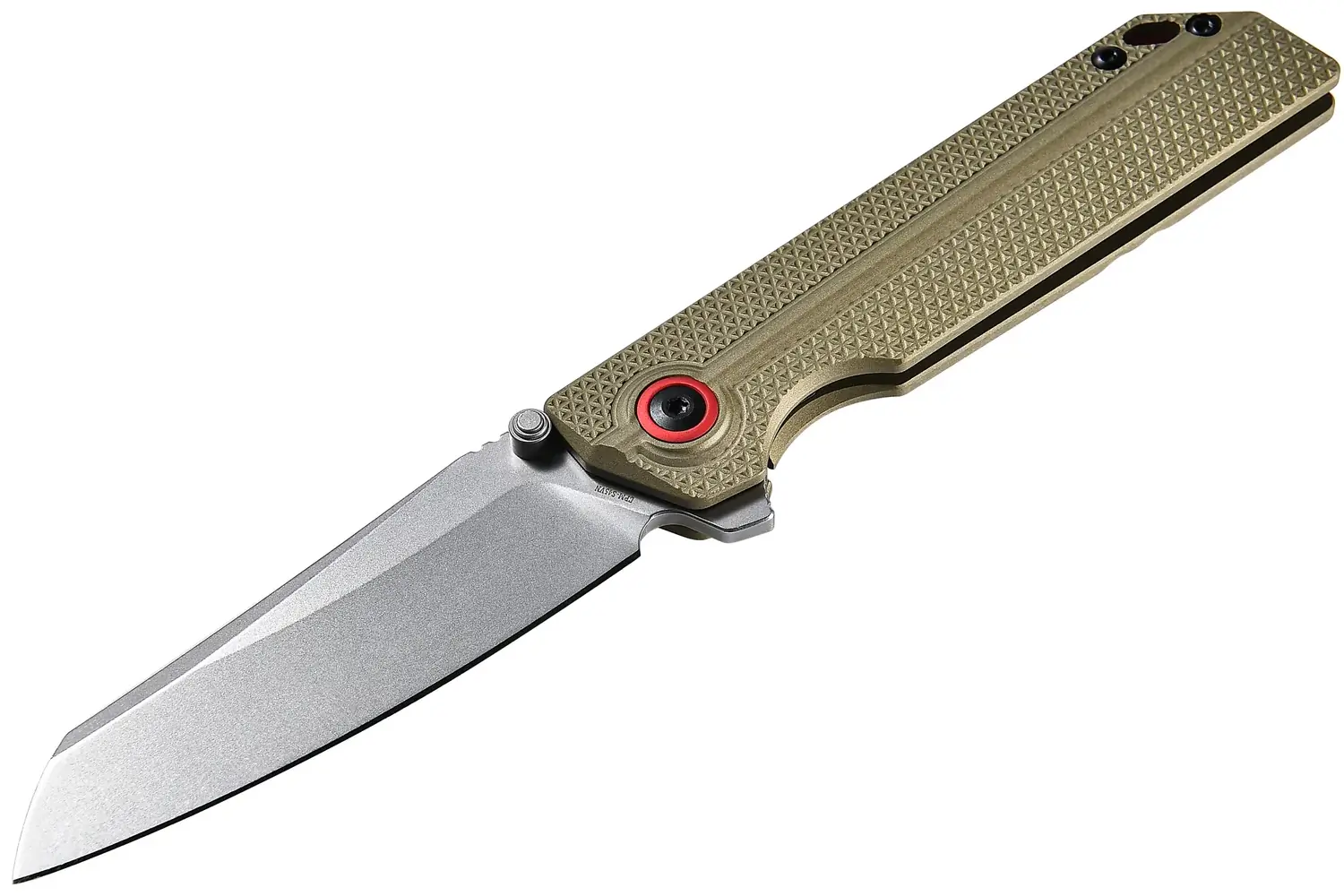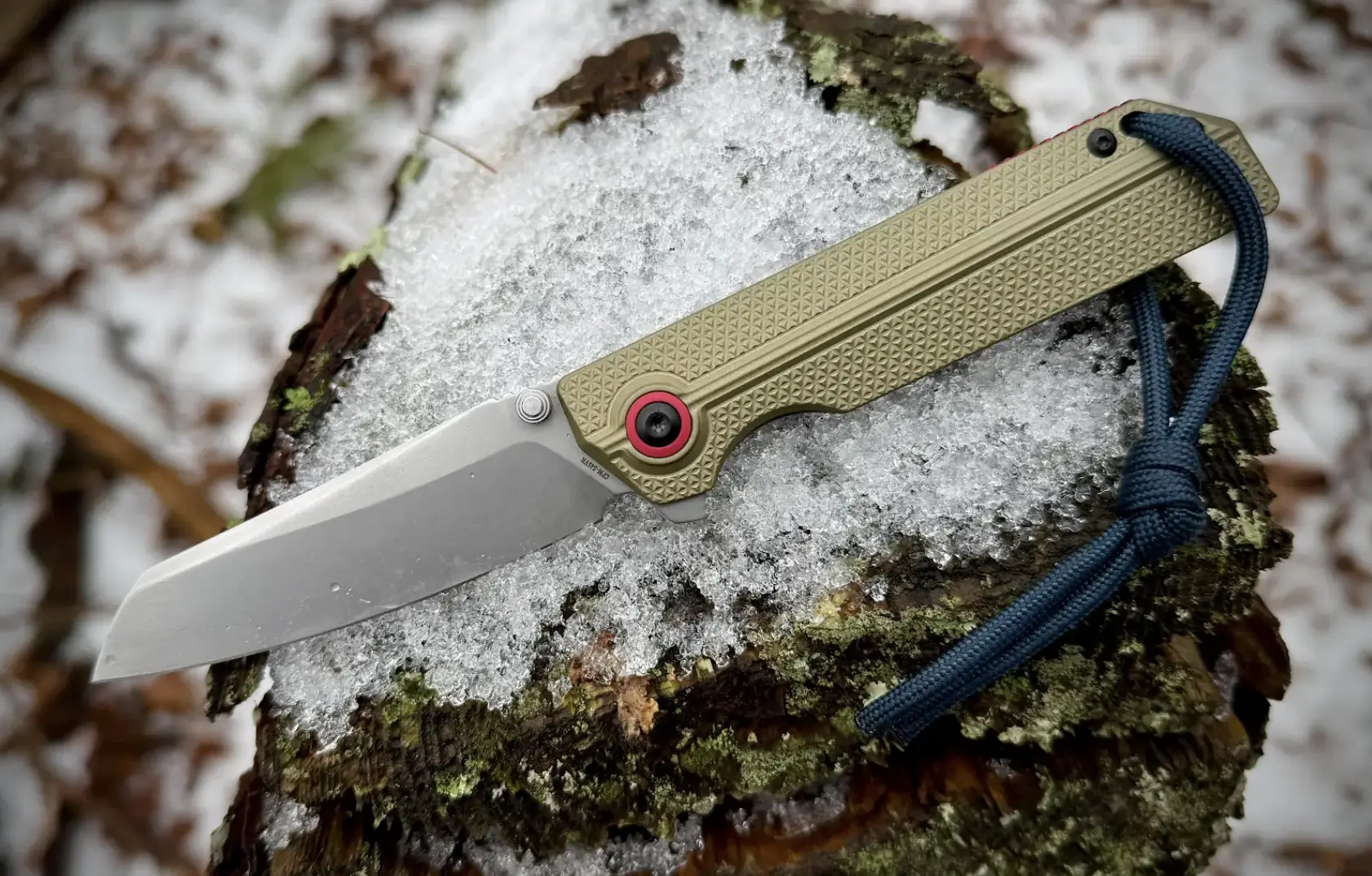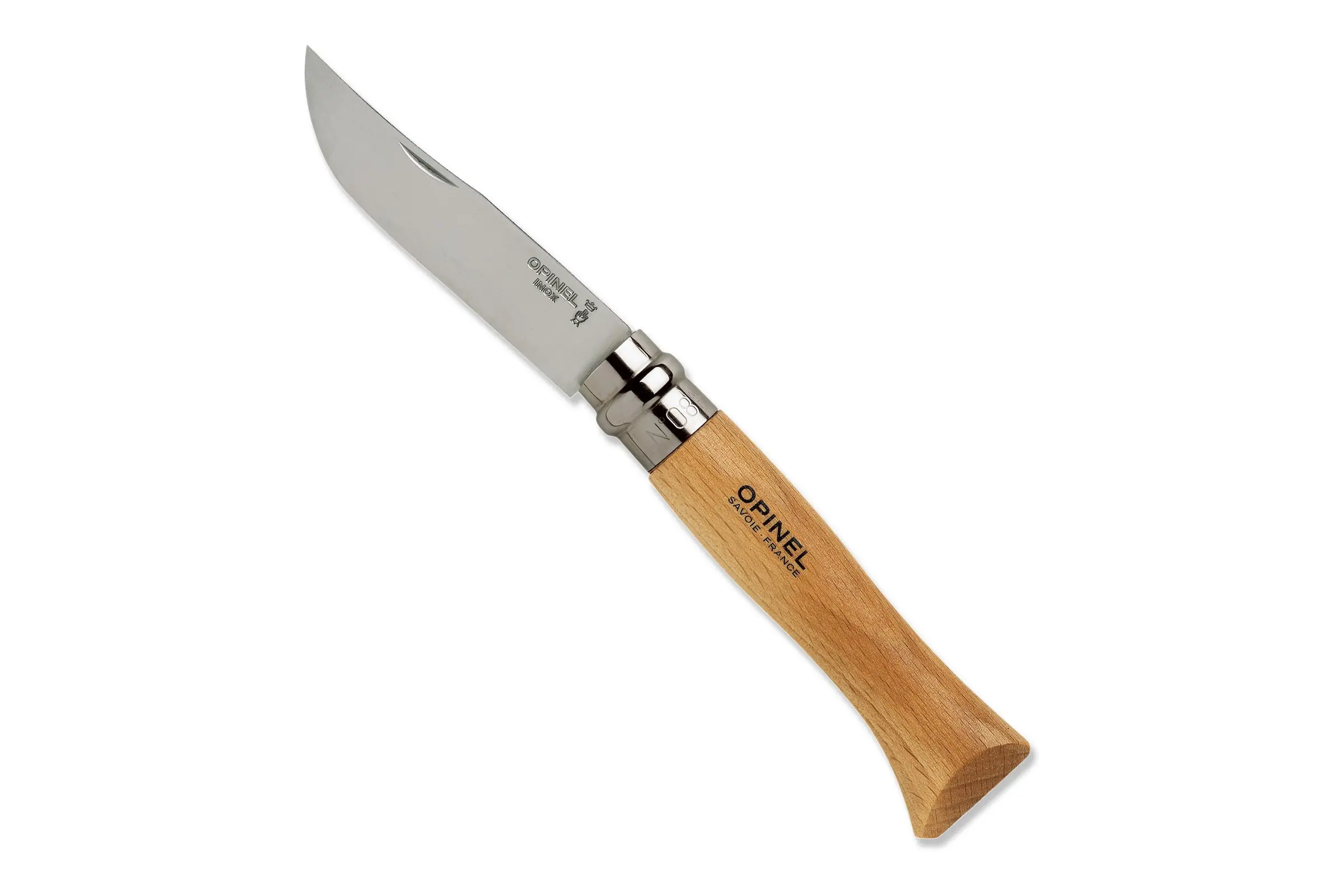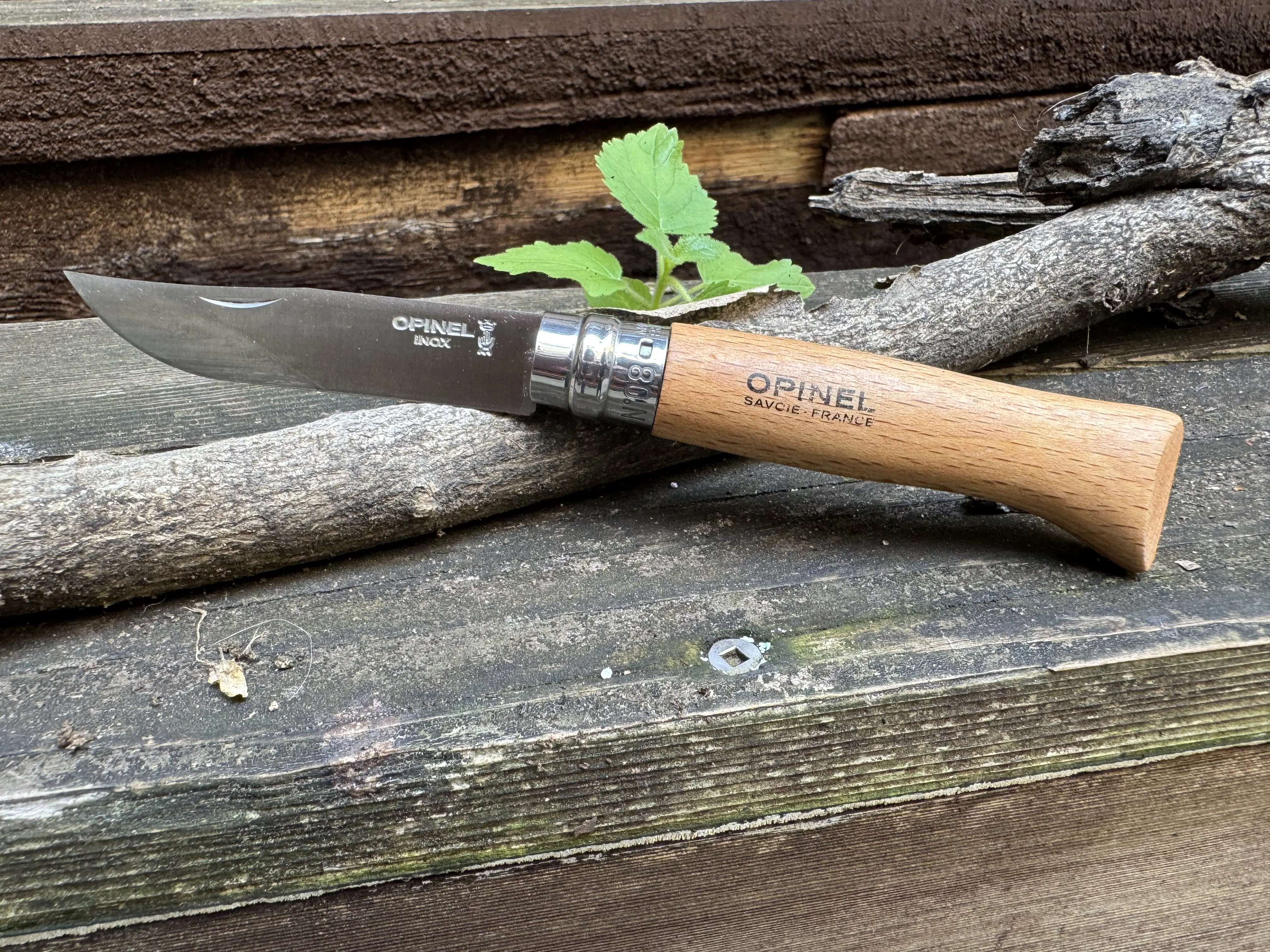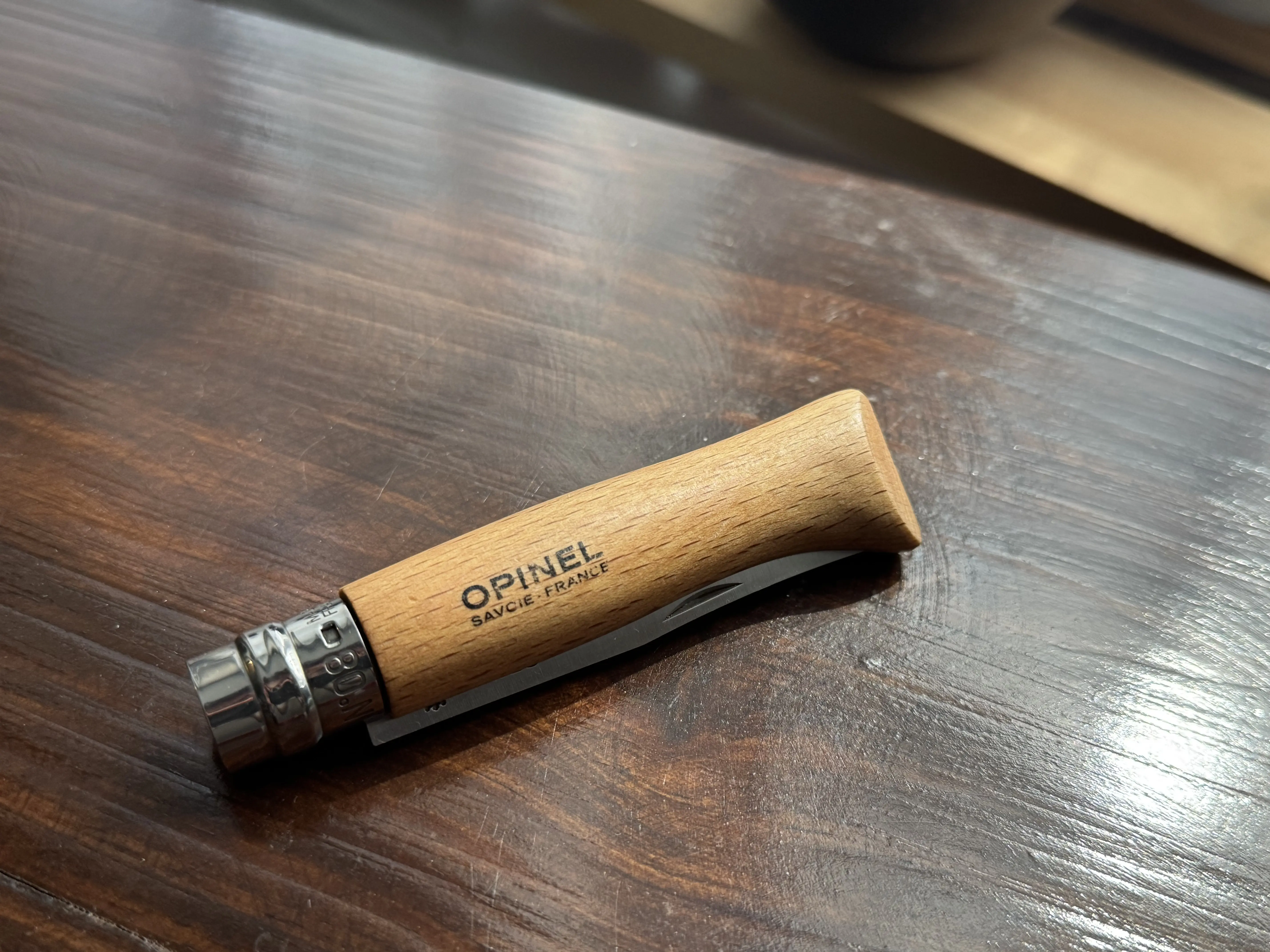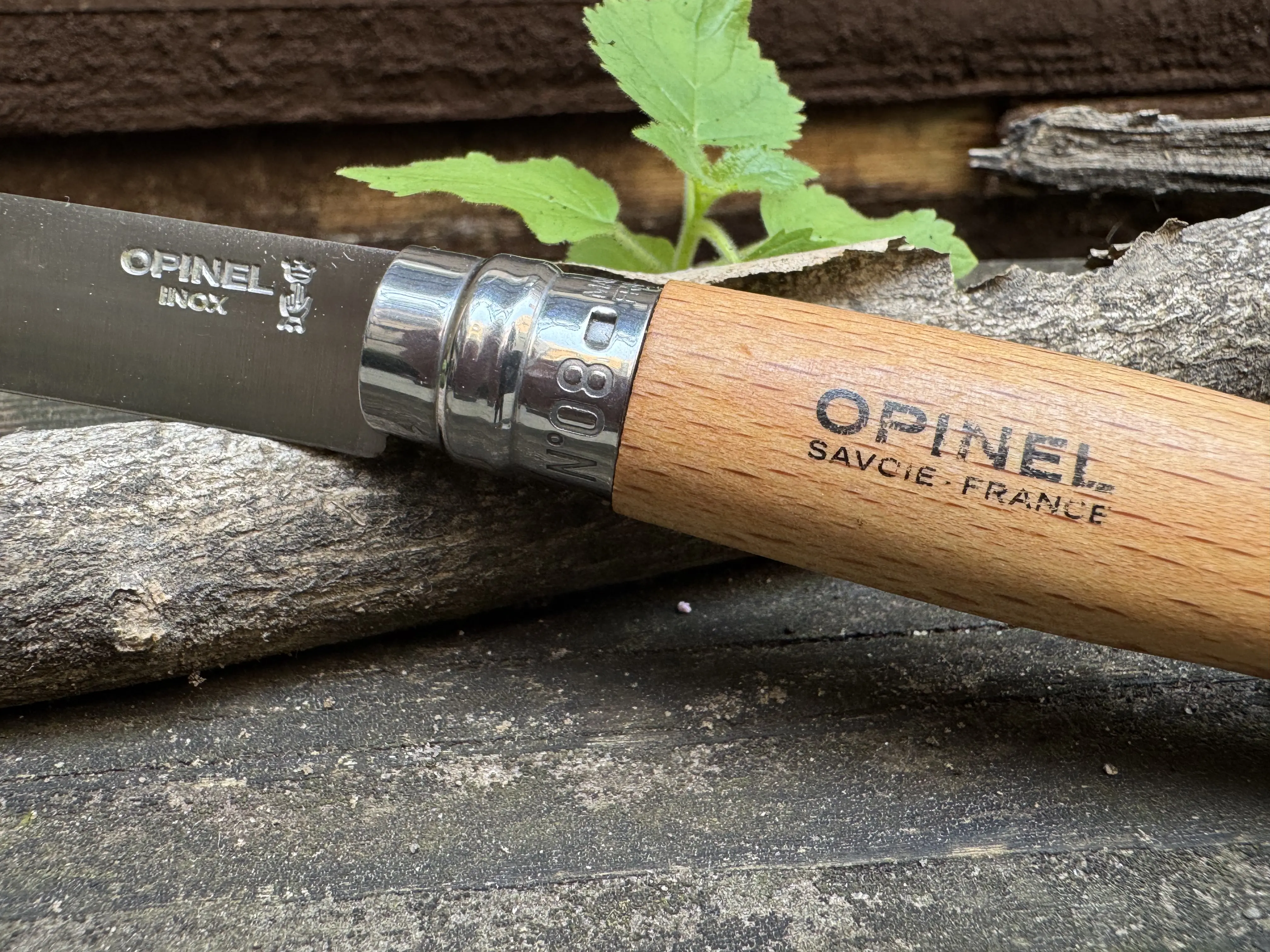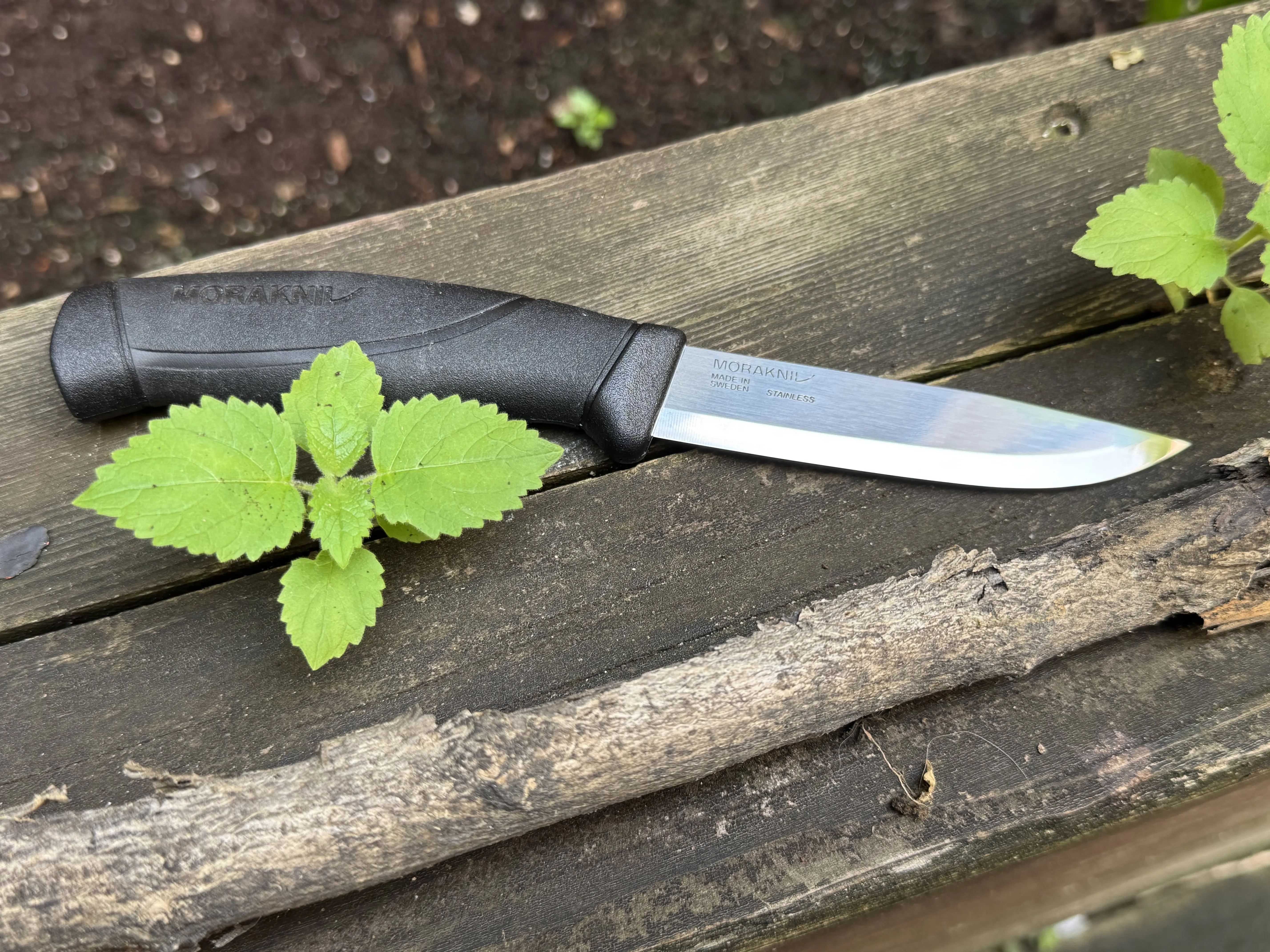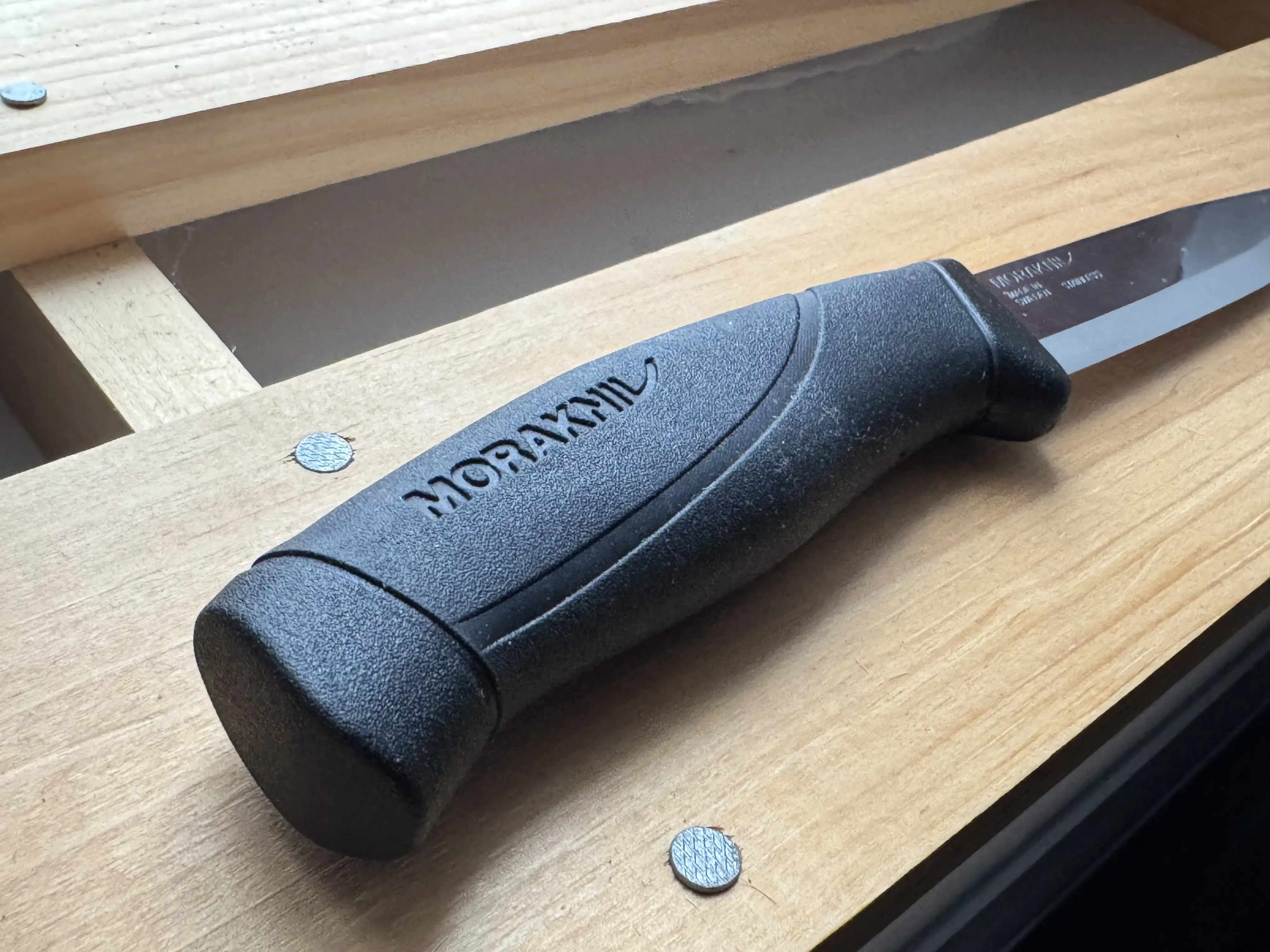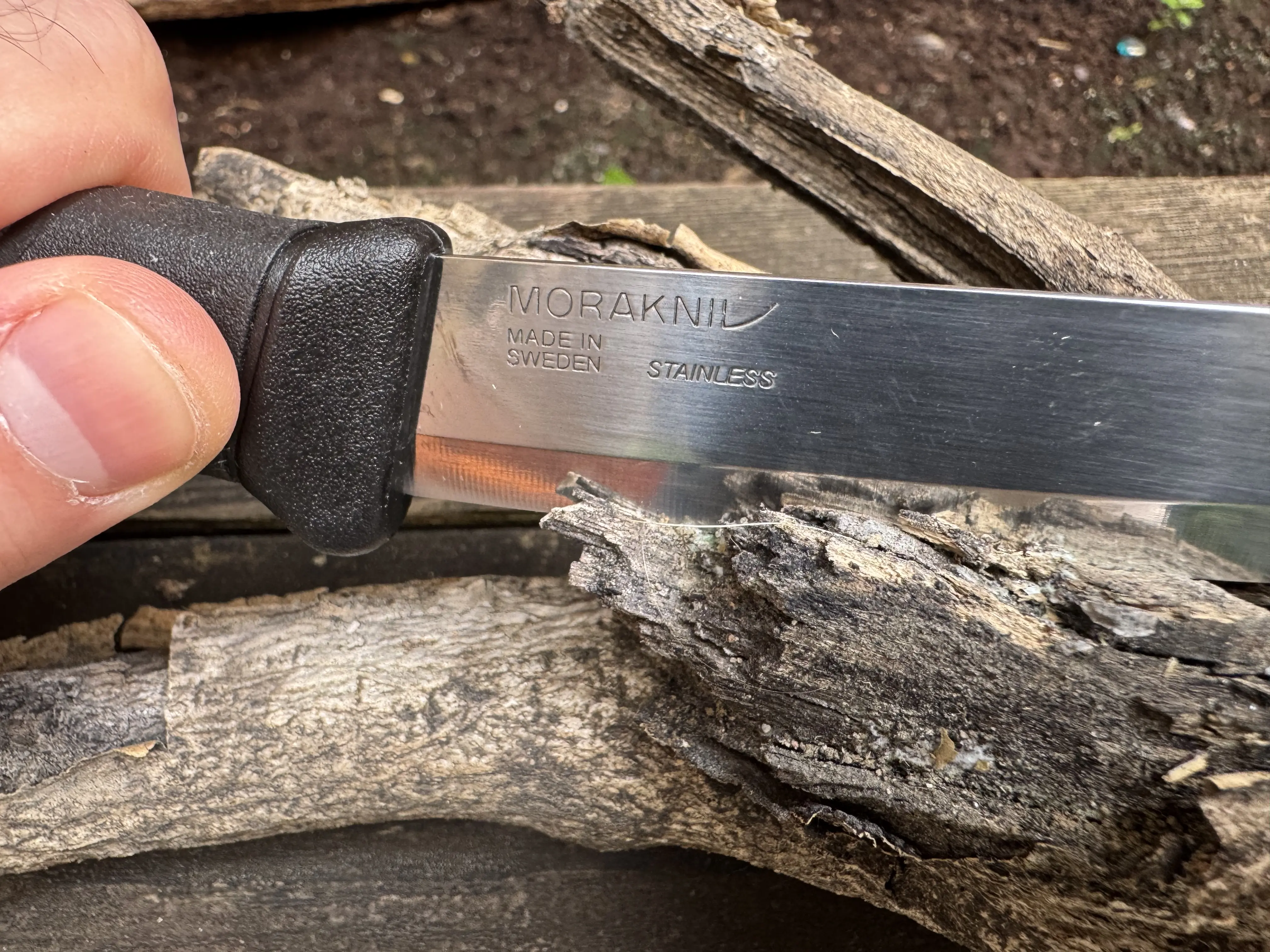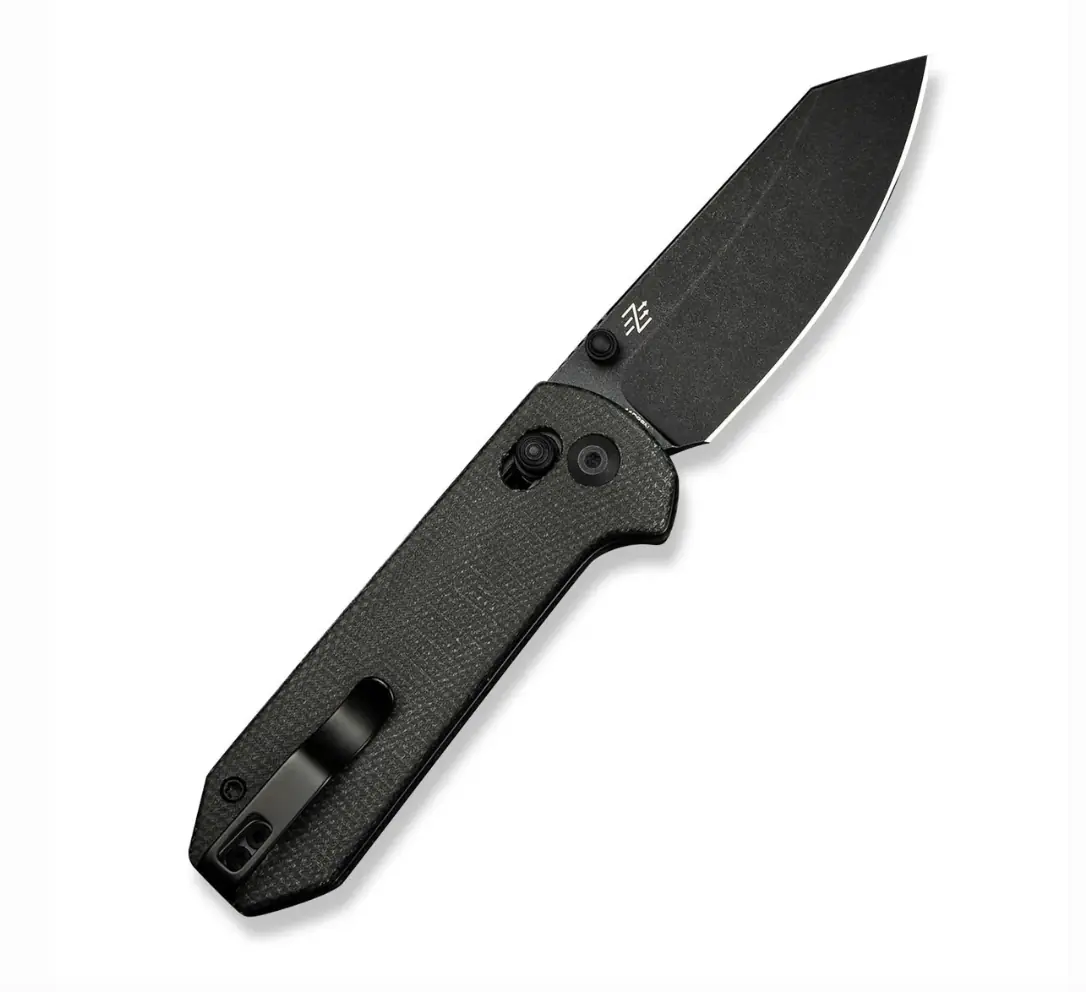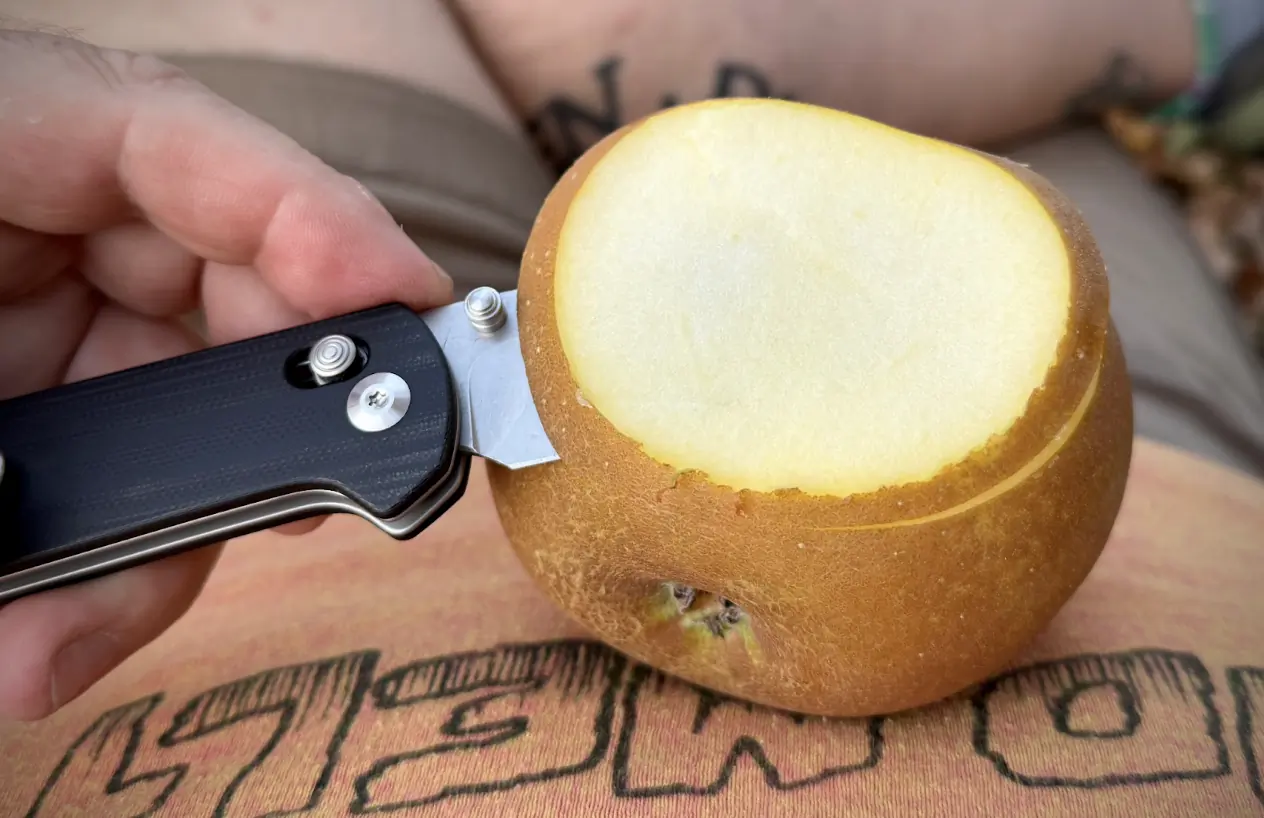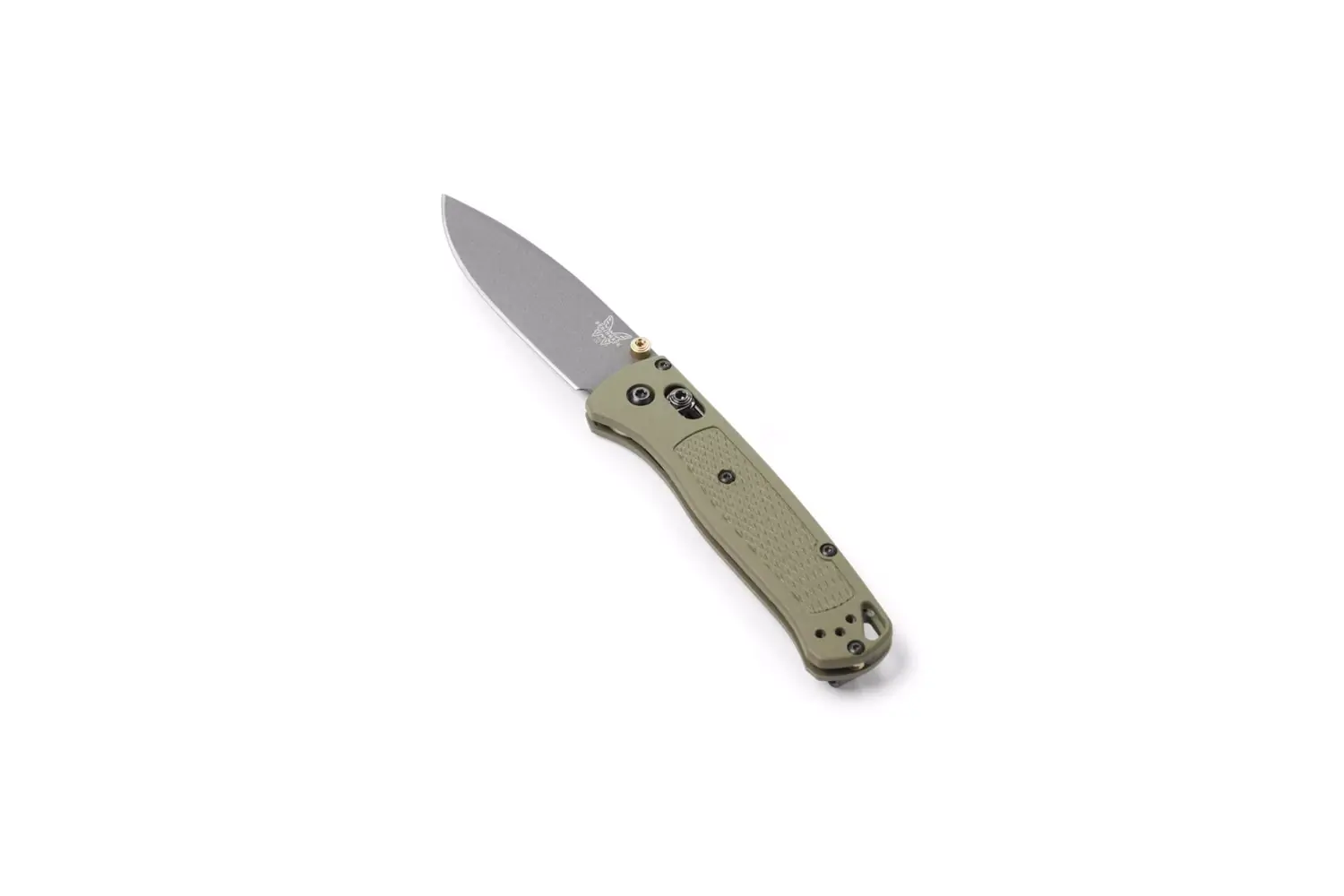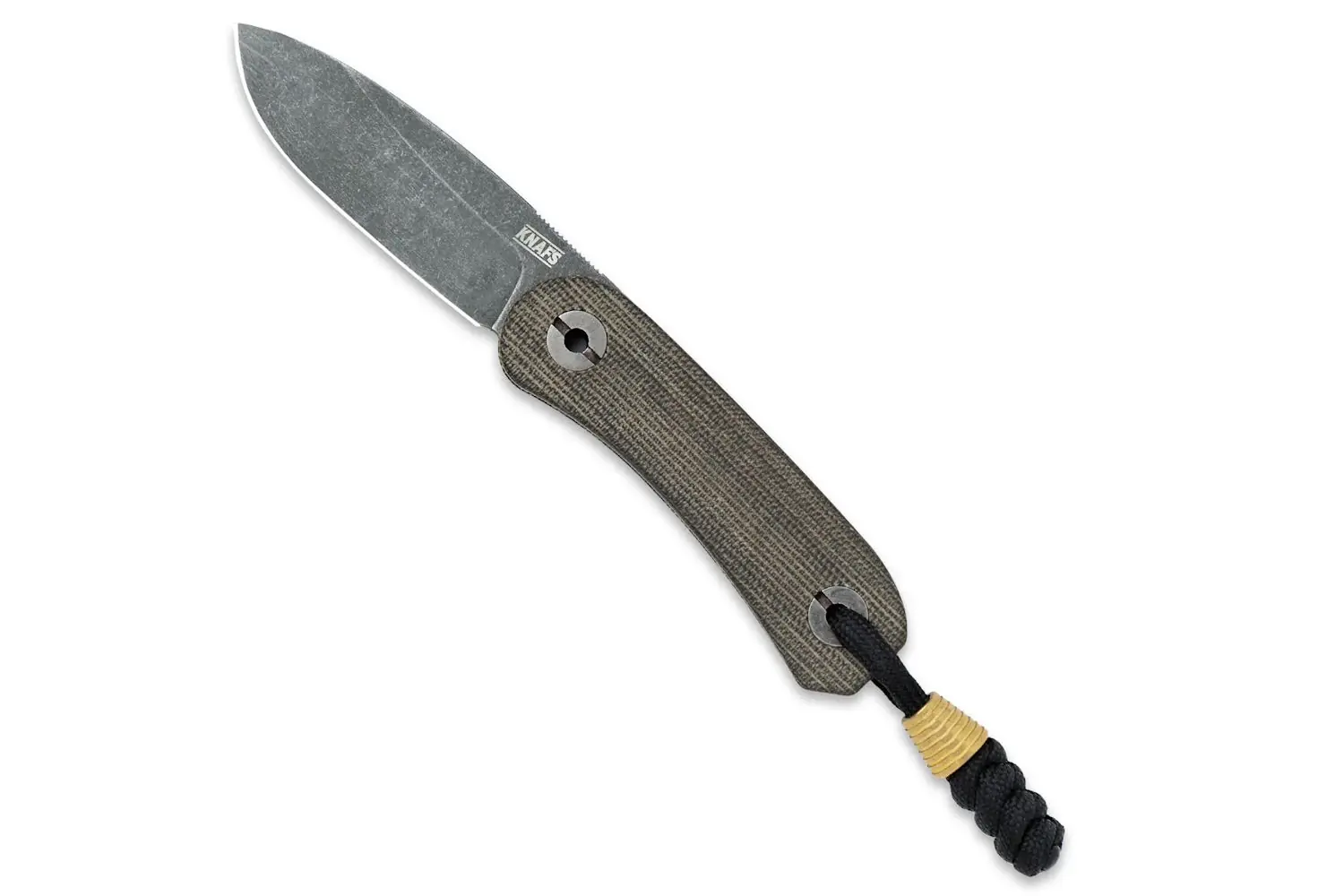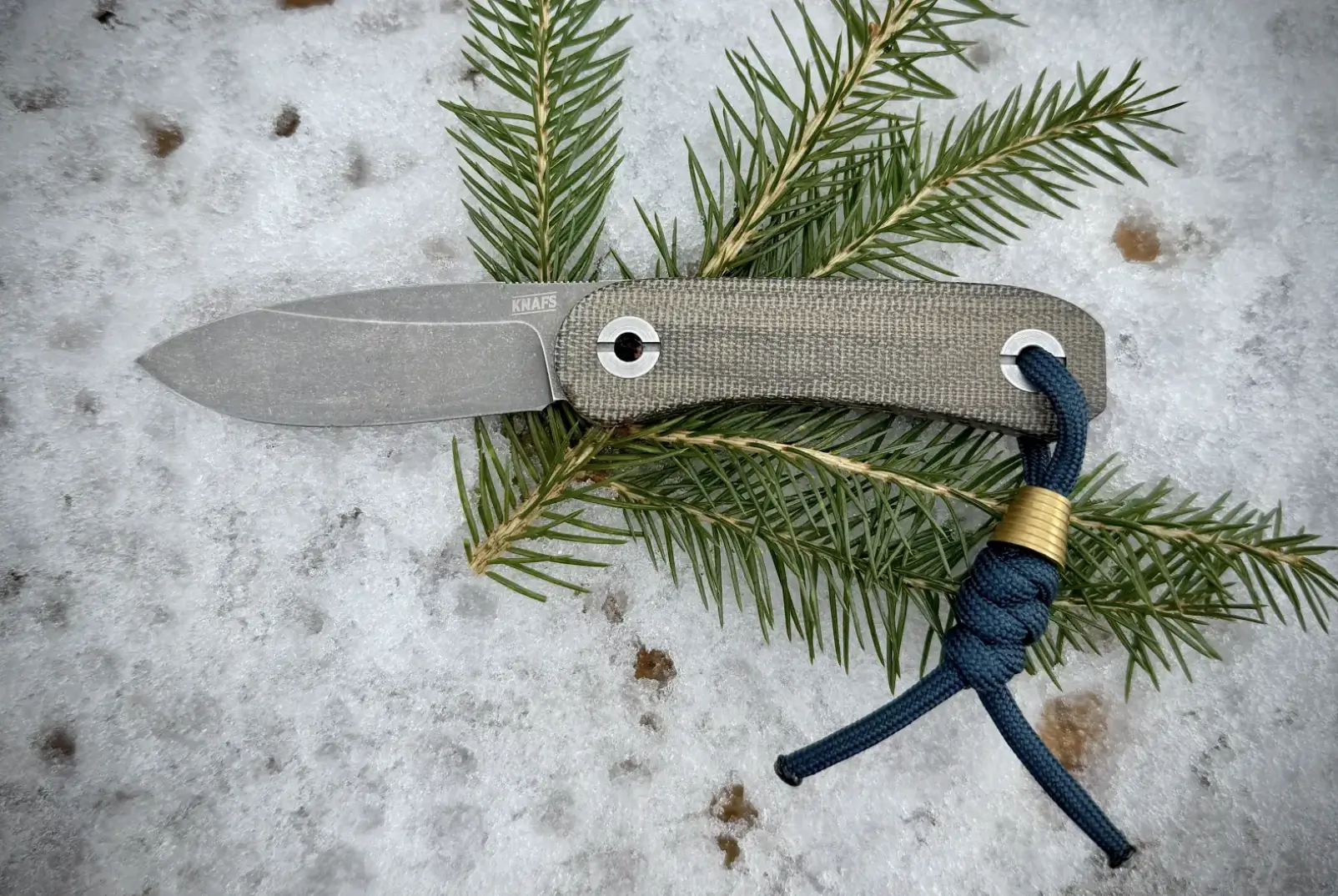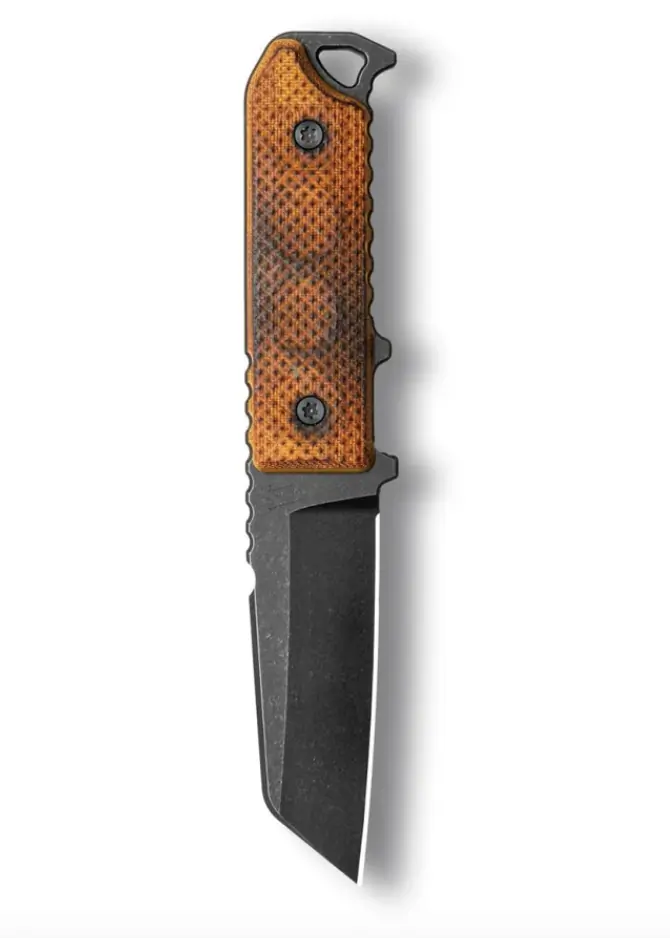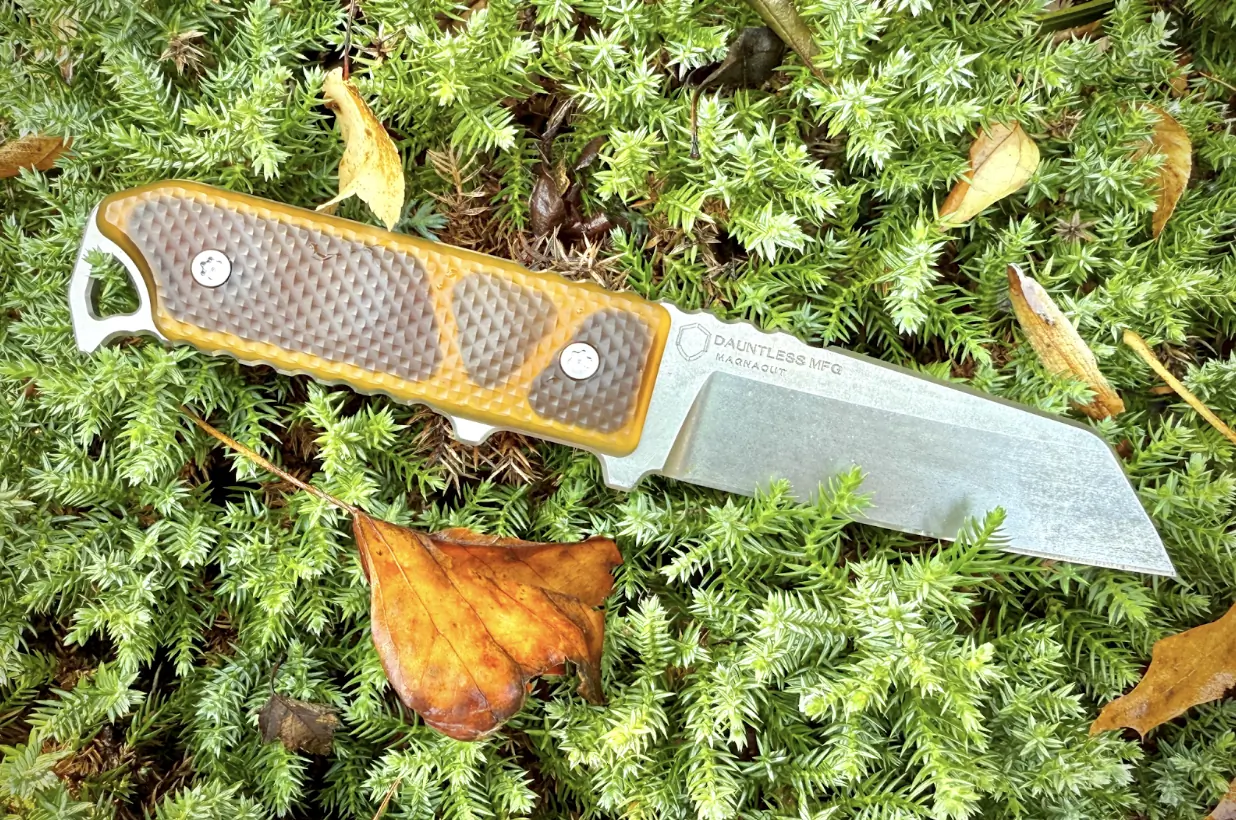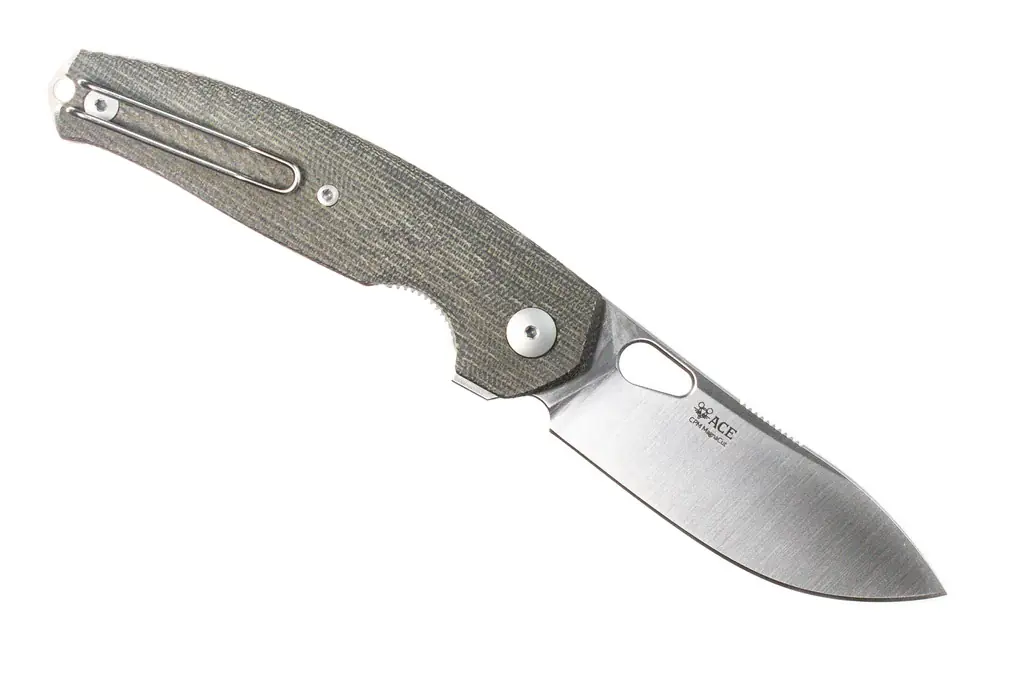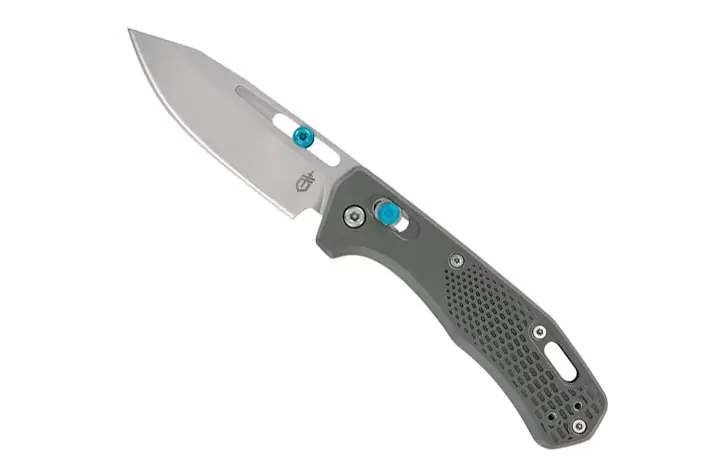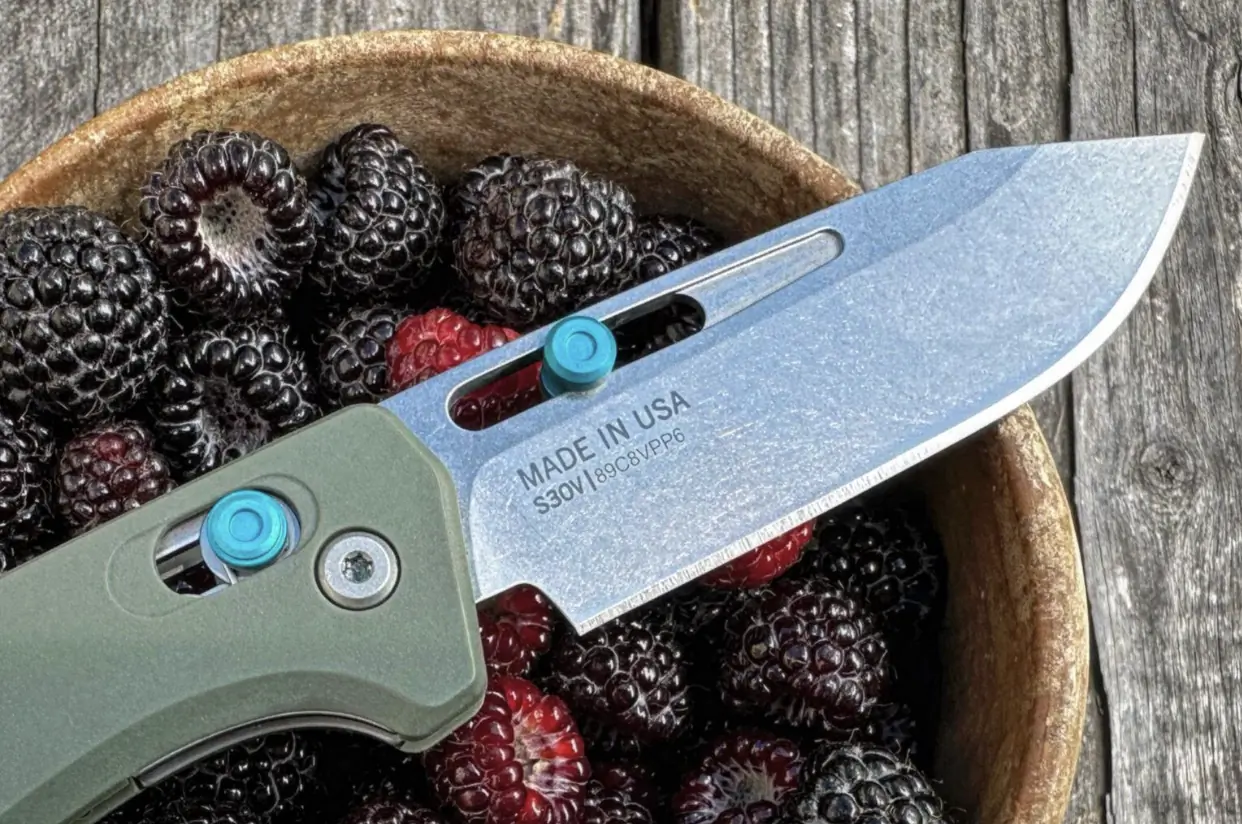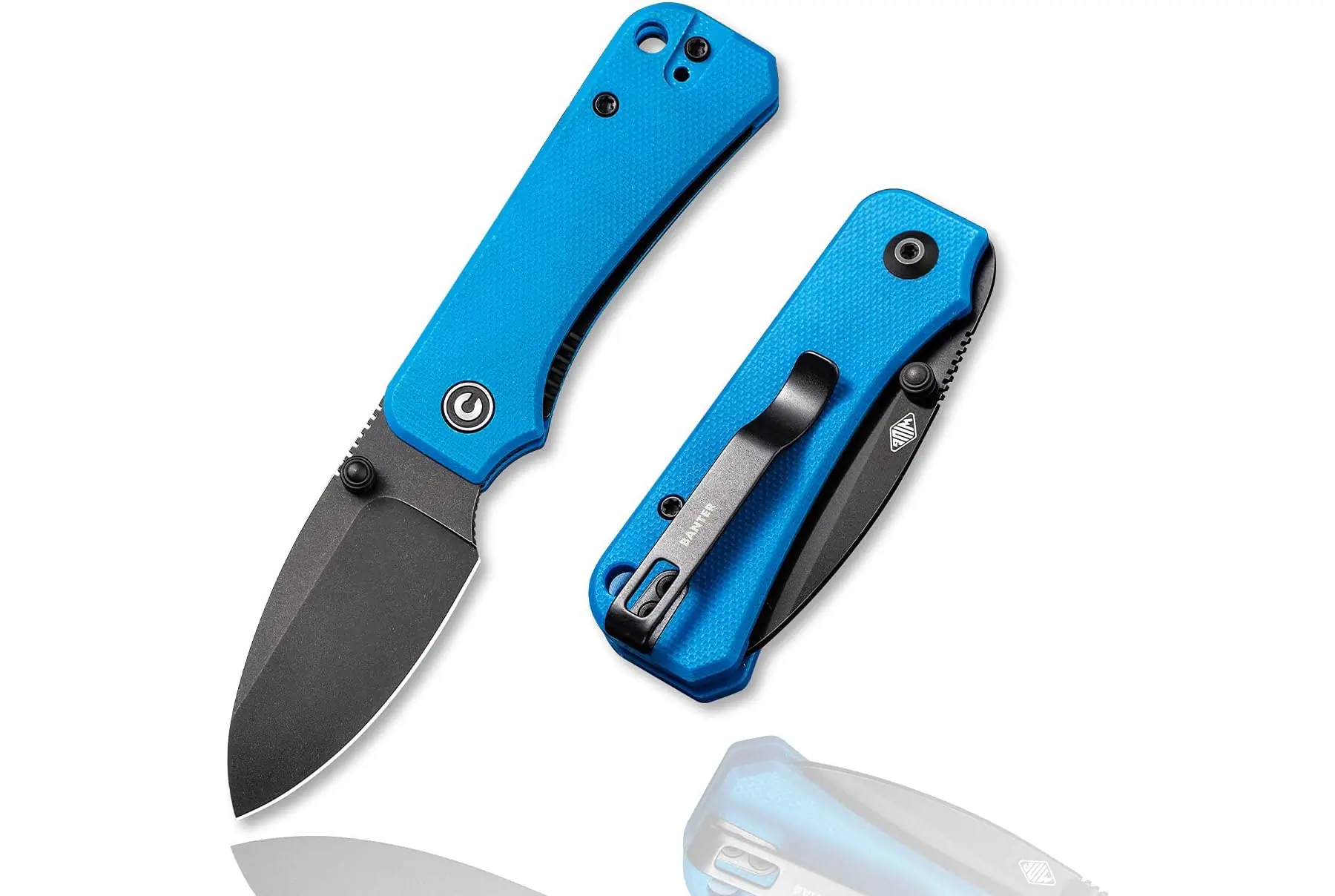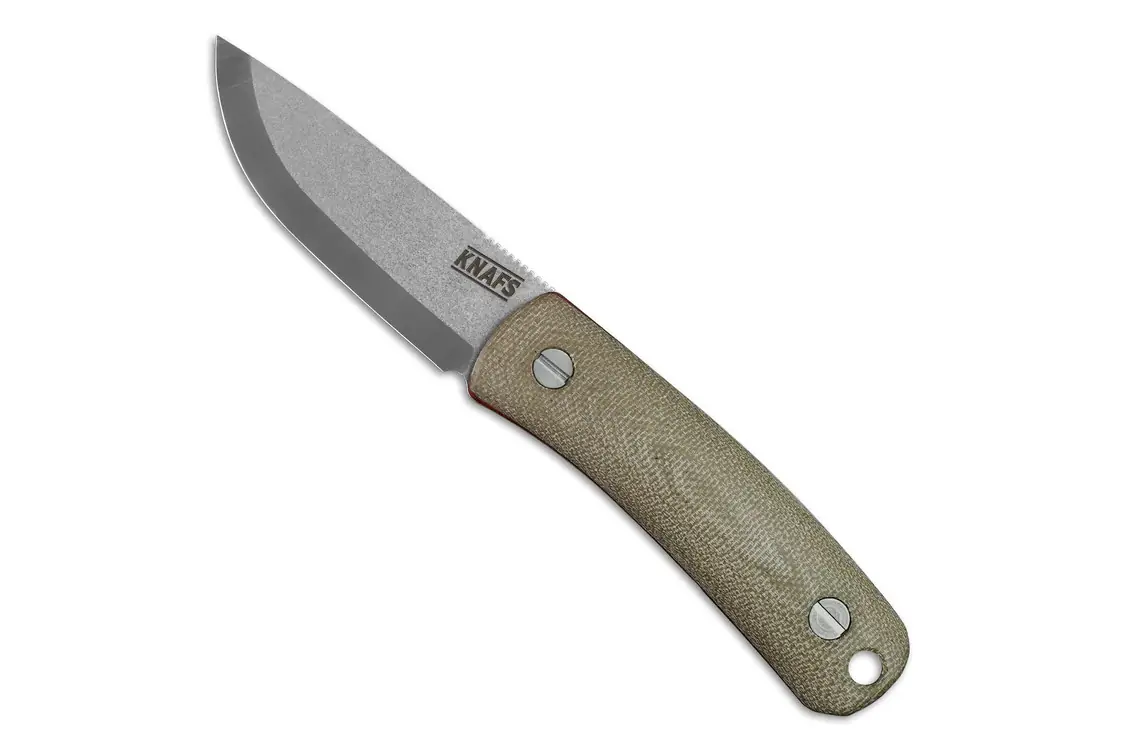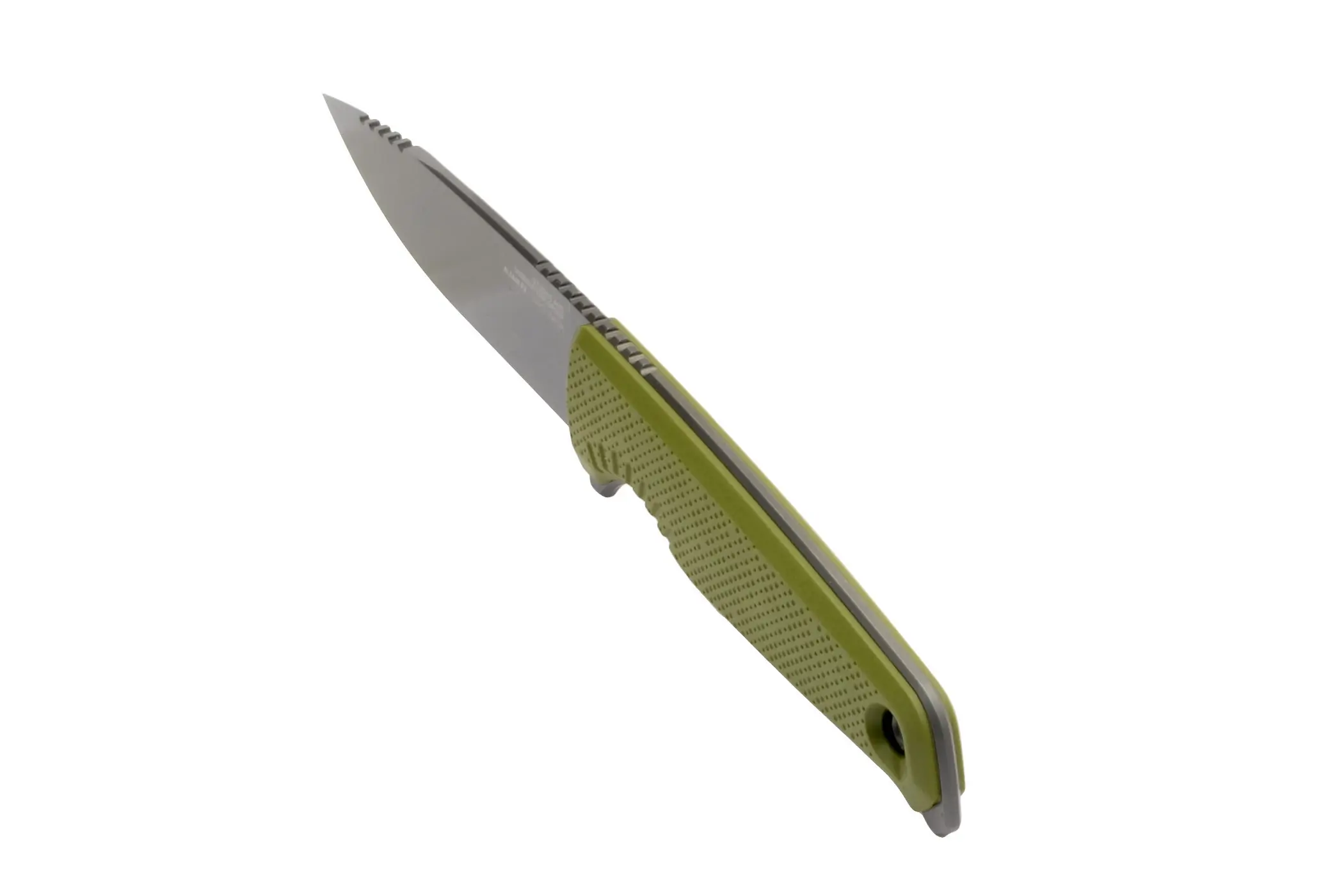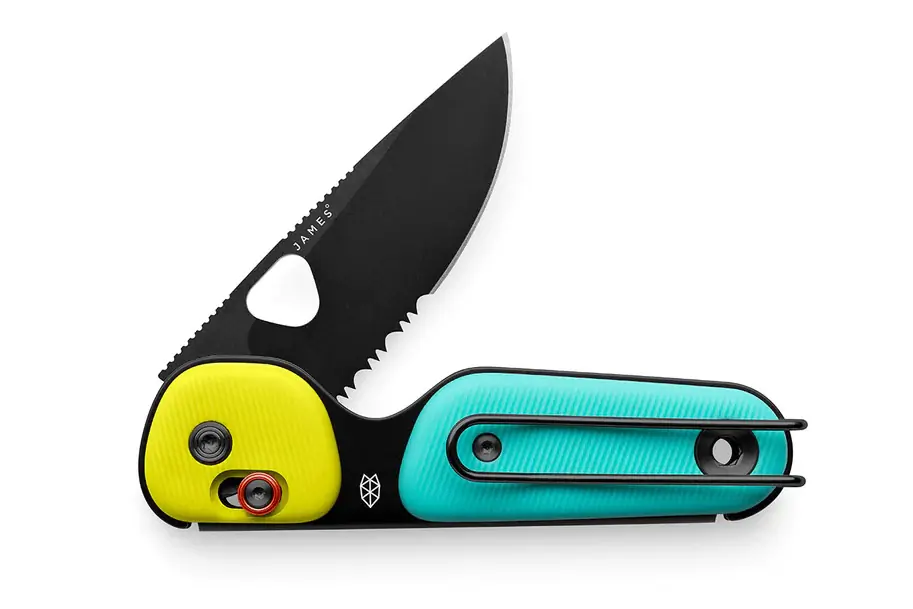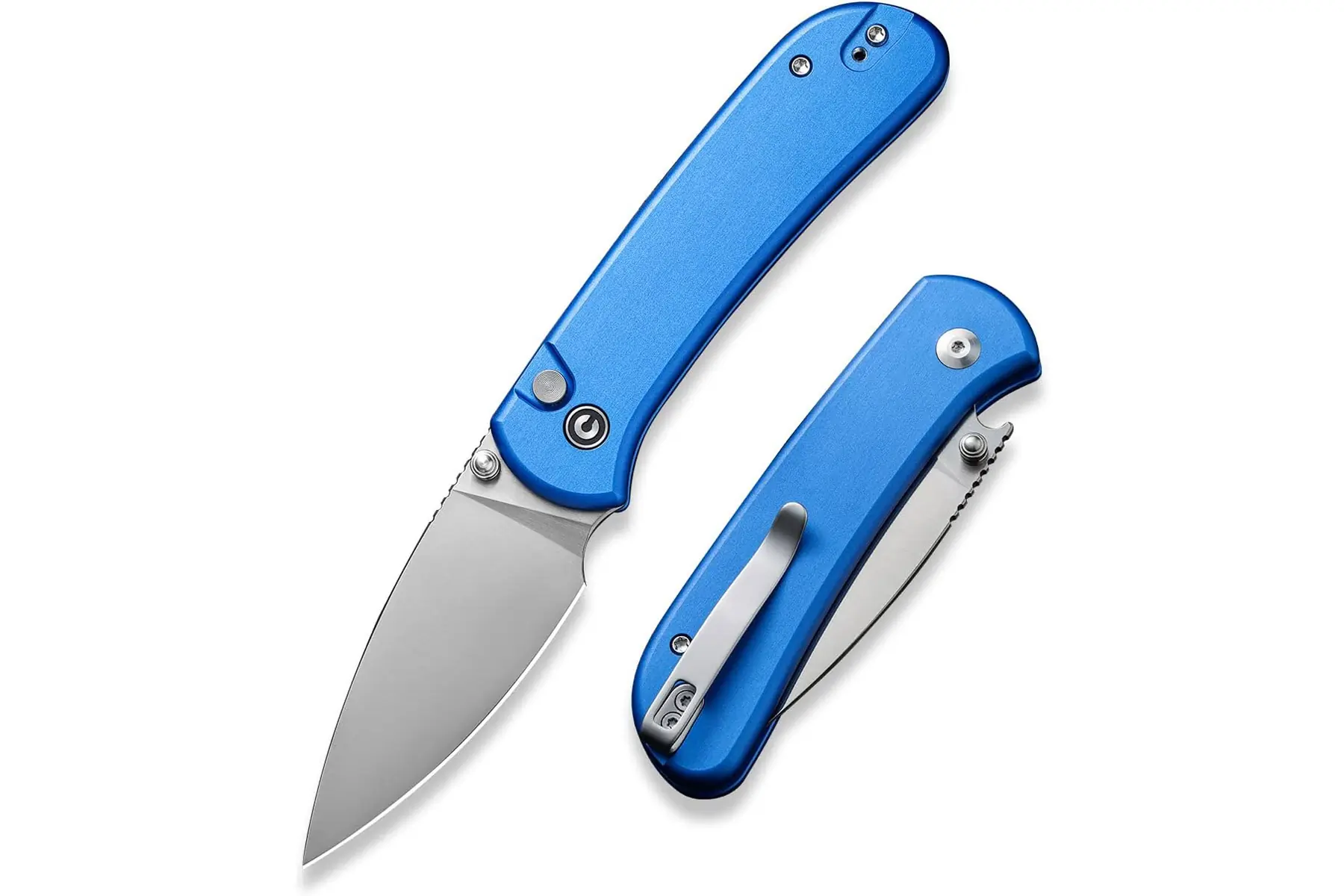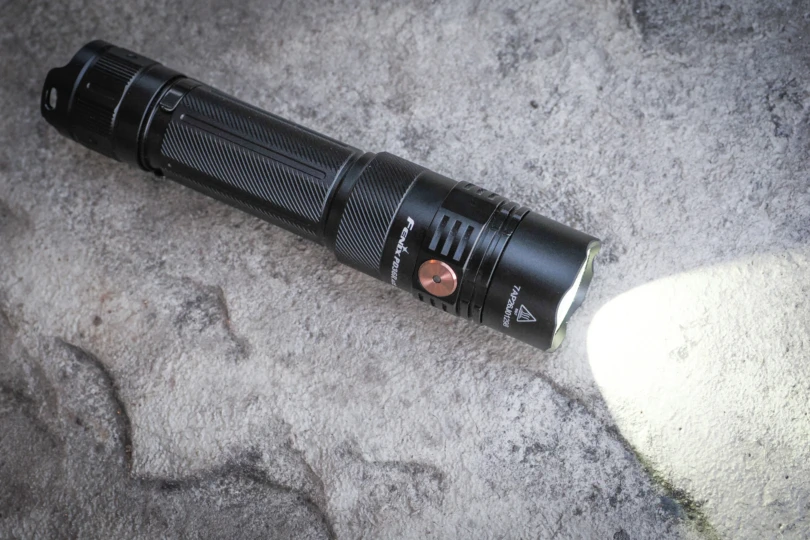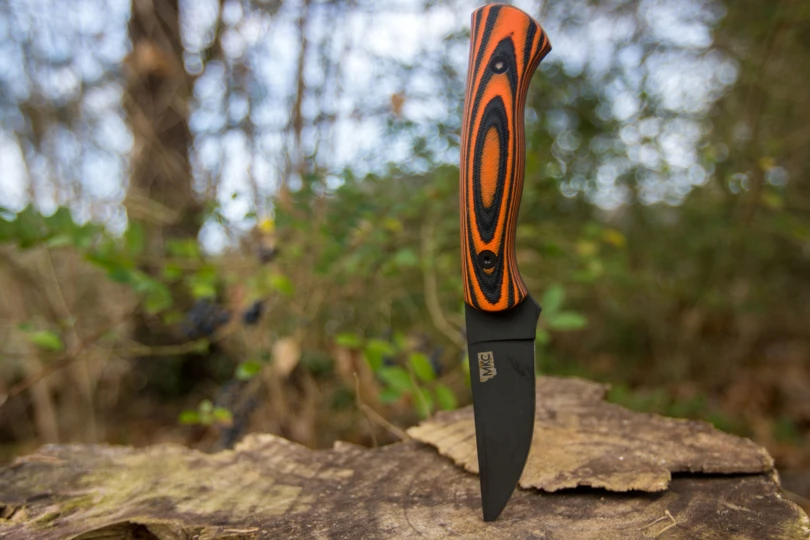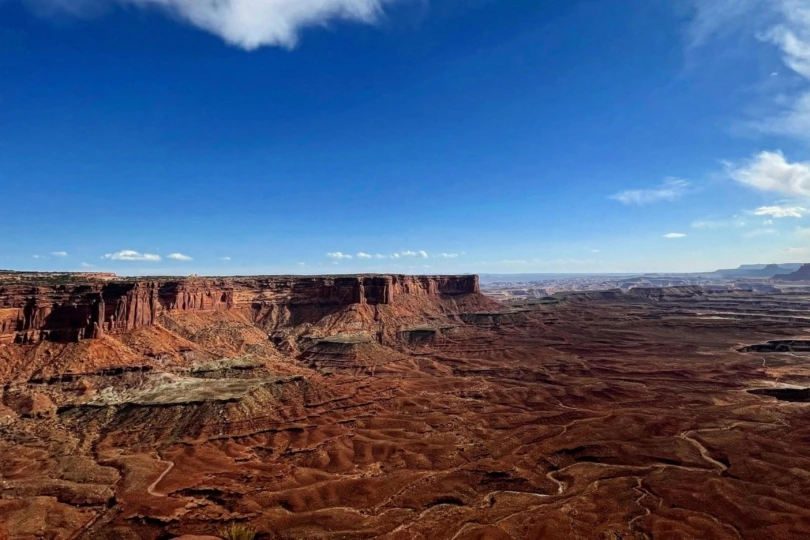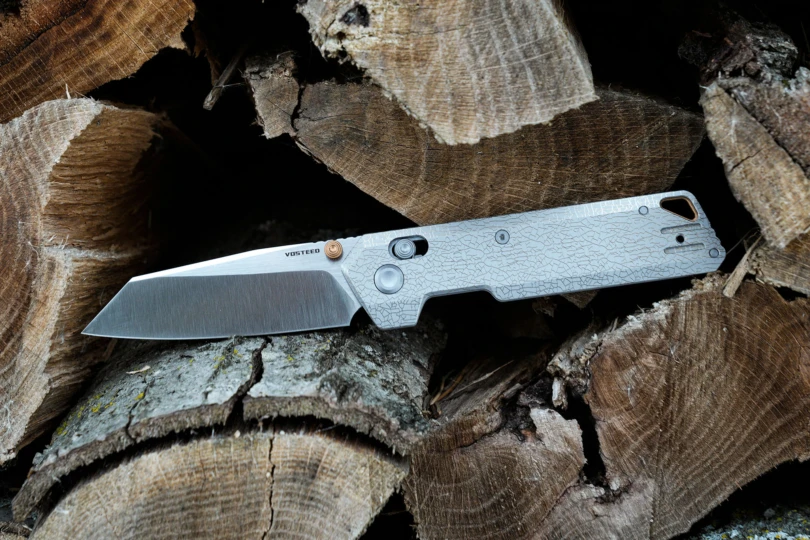Hiking and backpacking are year-round activities that many of us cling to as a way of taking a break from our day-to-day lives. There’s just something about getting into the outdoors and living out of your backpack that can’t be compared to anything else. One key component to life on the trail is a good knife, our current favorite being the OKNIFE XEN-OAL.
Whether you’re out there for a few hours or a few days, a knife can make all of the difference in your adventure. From harvesting tinder to food prep to helping you out in an emergency, the best knives are made from premium materials meant to be used and abused in the elements.
The knife market is massive, and there’s a lot of overlap from brand to brand, and even within brands. That’s why we’ve taken the time, over this past year, to present you with the following collection of knives. Each of these knives meets the lightweight, reliable, and versatile requirements deemed necessary to be considered the ideal knife for you when you head out into the outdoors.
Editor’s note: As autumn approaches, we’ve updated this guide on August 4, 2025, adding two new favorite knives: the Opinel No.08 and Morakniv Companion.
The Best Knives for Hiking & Backpacking of 2026
OKNIFE XEN-OAL Knife
- OAL: 7.36”
- Blade length: 3.16”
- Blade steel: S45VN w/Pearlescent stonewash finish
- Blade shape: Sheepsfoot
- Grind: Flat
- Hardness: 61-63 HRC
- Lock type: Frame
- Opening type: Flipper & thumb stud
- Carry: Right hand, tip-up
- Weight: 2.57 oz.
Pros
- OAL aluminum alloy
- S45VN sheepsfoot blade
- Size-to-weight ratio
- Hardworking
- Grip and ergonomics
Cons
- Aluminum stays cold for a while (you really feel it in your back pocket)
Opinel No.08 Inox
-
Blade Shape
7.5
-
Steel
6.8
-
Handle
7.1
-
Lock
7.0
- OAL: 7.59”
- Blade length: 3.28”
- Blade Steel: Sandvik 12C27 stainless steel
- Blade shape: Yatagan
- Lock type: Locking ring
- Weight: 1.6 oz.
Pros
- Excellent out-of-the-box sharpness
- Very lightweight at a mere 1.6 oz.
- Locking blade is easy to use
- Comfortable handle
Cons
- Grit, dirt, and sand get jammed in blade-locking ring
- Convex grind takes a bit more skill to sharpen compared to a flat grind
- Sandvik 12C27 is a fine stainless steel, but not a premium choice
Morakniv Companion
-
Value
9.2
-
Durability
7.5
-
Style
7.7
-
Performance
7.7
- Overall length: 8.6”
- Blade length: 4.1”
- Steel: Sandvik 12C27 stainless steel
- Blade shape: Drop point
- Grind: Scandi
- Hardness: 56.5 HRC
- Handle: TPE rubber-coated
- Sheath material: Polymer
- Weight: 4.1 oz. (with sheath)
- Price: $19
Pros
- Strong enough for lightweight batoning of thin branches
- Extremely sharp right from the package
- Ultra-grippy rubber make it ultra comfortable and easy to hold onto in all conditions
- Fits securely into the plastic sheath that comes with it
Cons
- Sandvik 12C27 is a fine stainless steel … for the price
- Blade is a bit long for a backpacking knife
- 2.5mm-thick blade makes it less nimble
CIVIVI Yonder
-
Blade shape
7.9
-
Steel
7.8
-
Handle
8.0
-
Lock
8.0
- Overall Length: 6.62”
- Blade Length: 2.88”
- Blade Steel: 14C28N
- Blade Style: Spey Point
- Handle Material: G-10
- Lock Type: Crossbar
- Weight: 273 oz.
Pros
- Great balance between size and weight
- Optimal grip options for all hand sizes
- 14C28N
Cons
- Crossbar lock has shorter pull than the industry standard
- No obvious lanyard options
Benchmade Bugout
- Overall Length: 7.46”
- Blade Length: 3.24”
- Blade Steel: S30V
- Blade Style: Drop point
- Handle Material: Grivory
- Lock Type: Axis (Crossbar)
- Weight: 1.85 oz.
Pros
- S30V Steel
- Crossbar lock
- Length to weight ratio
- Customizable
Cons
- Watch out for flexing under duress
Knafs Lander 4
- OAL: 5.9”
- Blade length: 2.6”
- Blade shape: Drop point
- Weight: 3.4 oz.
- Steel: 14C28N
- Handles: Micarta
- Sheath: Kydex (included) or Leather (optional)
Pros
- Sleek, slim design
- Premium steel at value price
- Optional pocket sheath offers concealment
Cons
- Kydex sheath clip is not universal
Dauntless Manufacturing Hiker
- Overall length: 7.6”
- Blade length: 3.7”
- Blade steel: MagnaCut
- Blade style: Wharncliffe
- Handle material: Ultem
- Sheath material: Kydex
- Weight: 4.9 oz.
Pros
- Overall shape
- MagnaCut steel
- Ultem handle scales
- Customizable
Cons
- Many options to choose from
- Expensive
GiantMouse ACE Jagt Knife
- OAL: 8”
- Blade length: 3.27”
- Blade steel: CPM MagnaCut
- Blade shape: Modified drop point
- Grind: Flat
- Hardness: 60-62 HRC
- Lock type: Frame lock
- Carry: Left or right hand, tip-up
- Weight: 4 oz.
- Price: $215
Pros
- Nessmuk blade design
- Rippled Micarta is EPIC
- Fantastic hand feel
- Well-balanced
Cons
- Rounded edges minimize your firestarting options
- Spine jimping could be a stretch for smaller hands
Other Great Knives for Hiking and Backpacking
The following knives didn’t make the top of our list, but they’ve been field tested and are very much worthy of your consideration.
- Overall Length: 6.95”
- Blade Length: 2.98”
- Blade Steel: S30V
- Blade Style: Modified Drop Point
- Handle Material: Nylon
- Lock Type: Crossbar
- Weight: 1.87 oz.
Pros
- Enhanced ergonomics
- S30V Steel
- Crossbar lock
- Customizable
Cons
- Adjustable thumb stud = another moving part
- Overall Length: 6.76”
- Blade Length: 2.92”
- Blade Steel: Nitro-V
- Blade Style: Drop point
- Handle Material: G-10
- Lock Type: Liner
- Weight: 2 oz.
Pros
- Nitro-V Steel
- Ergonomics and overall styling
- The fidget factor
Cons
- Tight pocket clip out of the box
- Overall Length: 6.75”
- Blade Length: 2.95”
- Blade Steel: MagnaCut
- Blade Style: Drop point
- Handle Material: Micarta
- Sheath Material: Kydex
- Weight: 3.8 oz.
Pros
- Raw MagnaCut Steel
- Scandi grind
- Micarta handle scales
- Overall size
Cons
- None (seriously)
- Overall Length: 7.60”
- Blade Length: 3.40”
- Blade Steel: 154CM
- Blade Style: Drop point
- Handle Material: GRN
- Sheath Material: Kydex w. UMS
- Weight: 2.8 oz.
Pros
- Cryogenically processed TiNi-coated 154CM steel
- Ability to remove handle scales
- UMS sheath for multiple carry options
- Minimal weight
Cons
- None (again)
- Overall Length: 5.6"
- Blade Length: 2.2"
- Blade Steel: Sandvik 12C27 stainless steel
- Blade Style: Clip point
- Handle Material: Polymer grip
- Sheath Material: Polymer
- Weight: 2.8 oz.
Pros
- Good value
- Perfect for whittling
- Comfortable handle
- Small and packable
Cons
- A bit heavy for how small it is
- Too small for some tasks
- Overall Length: 6.20”
- Blade Length: 2.5”
- Blade Steel: Sandvik 12C27
- Blade Style: Drop point
- Handle Material: Plastic
- Lock Type: Crossbar
- Weight: 1.8 oz.
Pros
- Forward-thinking design
- Crossbar lock
- Innovative grip
Cons
- Wire pocket clip isn't our favorite
- Overall Length: 7.19”
- Blade Length: 2.98”
- Blade Steel: 14C28N
- Blade Style: Drop point
- Handle Material: Aluminum
- Lock Type: Button lock
- Weight: 2.82 oz.
Pros
- 14C28N stainless steel
- Button lock
- Ceramic bearings
Cons
- It could be an inch longer
Knives for Hiking & Backpacking Comparison Chart
| Knife | Price | Overall Length | Blade Length | Blade Steel | Blade Style | Handle Material | Lock Type | Weight |
|---|---|---|---|---|---|---|---|---|
| OKNIFE XEN-OAL Knife | $190 | 7.36” | 3.16” | S45VN w | Sheepsfoot | Aluminum | Frame Lock | 2.57 oz. |
| Opinel No.08 Inox | $19 | 7.59” | 3.28” | Sandvik 12C27 | Yatagan | Beechwood | Virobloc | 1.6 oz. |
| Morakniv Companion | $17 | 8.6” | 4.1” | Sandvik 12C27 | Drop point | Rubber coated | Kydex (sheath) | 4.1 oz. |
| CIVIVI Yonder | $66 | 6.62” | 2.88” | 14C28N | Spey Point | G-10 | Crossbar | 273 oz. |
| CIVIVI Baby Banter | $70 | 6.76” | 2.92” | Nitro-V | Drop point | G-10 | Liner | 2 oz. |
| Benchmade Bugout | $170-330 | 7.46” | 3.24” | S30V | Drop point | Grivory | Axis (Crossbar) | 1.85 oz. |
| Knafs Lander 4 | $65 | 5.9″ | 2.6″ | 4C28N | Drop point | Micarta | Kydex (sheath) | 3.4 oz. |
| Dauntless Manufacturing Hiker | $235 | 7.6” | 3.7” | MagnaCut | Wharncliffe | Ultem | Kydex (sheath) | 4.9 oz. |
| GiantMouse ACE Jagt Knife | $215 | 8” | 3.27” | CPM MagnaCut | Modified drop point | Micarta | Frame lock | 4.0 oz. |
| Gerber Assert | $185 | 6.95” | 2.98 | S30V | Modified drop point | Nylon | Crossbar | 1.87 oz. |
| Knafs Lulu | $230 | 6.75” | 2.95” | MagnaCut | Drop point | Micarta | Kydex (sheath) | 3.8 oz. |
| SOG Altair FX | $150 | 7.60” | 3.40” | 154CM | Drop point | GRN | Kydex w. UMS (sheath) | 2.8 oz. |
| Morakniv Eldris | $30 | 5.6″ | 2.2″ | Sandvik 12C27 | Clip point | Polymer grip | Polymer (sheath) | 2.8 oz. |
| The James Brand Redstone | $99 | 6.20” | 2.5” | Sandvik 12C27 | Drop point | Plastic | Crossbar | 1.8 oz. |
| CIVIVI Qubit | $78 | 7.19” | 2.98” | 14C28N | Drop point | Aluminum | Button Lock | 2.82 oz. |
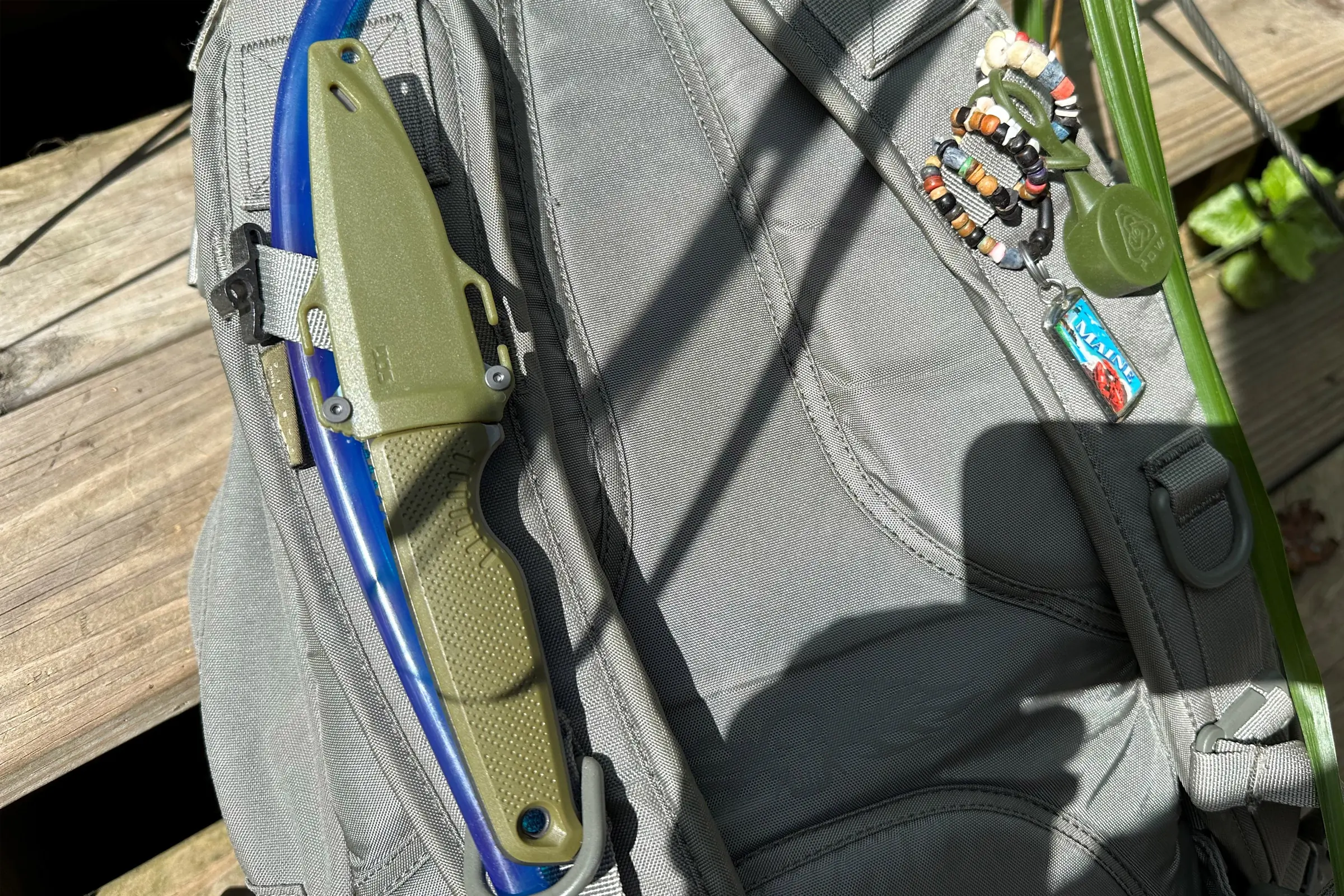
How We Tested Hiking and Backpacking Knives
GearJunkie has been lucky enough to have a solid team of knife testers over the years, and this year is no different. From Josh Wussow to Anthony Sculimbrene to Sean McCoy and Nick LeFort, just to name a few, we have an experienced group of people from different walks of life who are all knife freaks.
They all bring something unique and informative to the table in terms of making sure that you get the best of the best. Our team understands the assignment: Inform the masses.
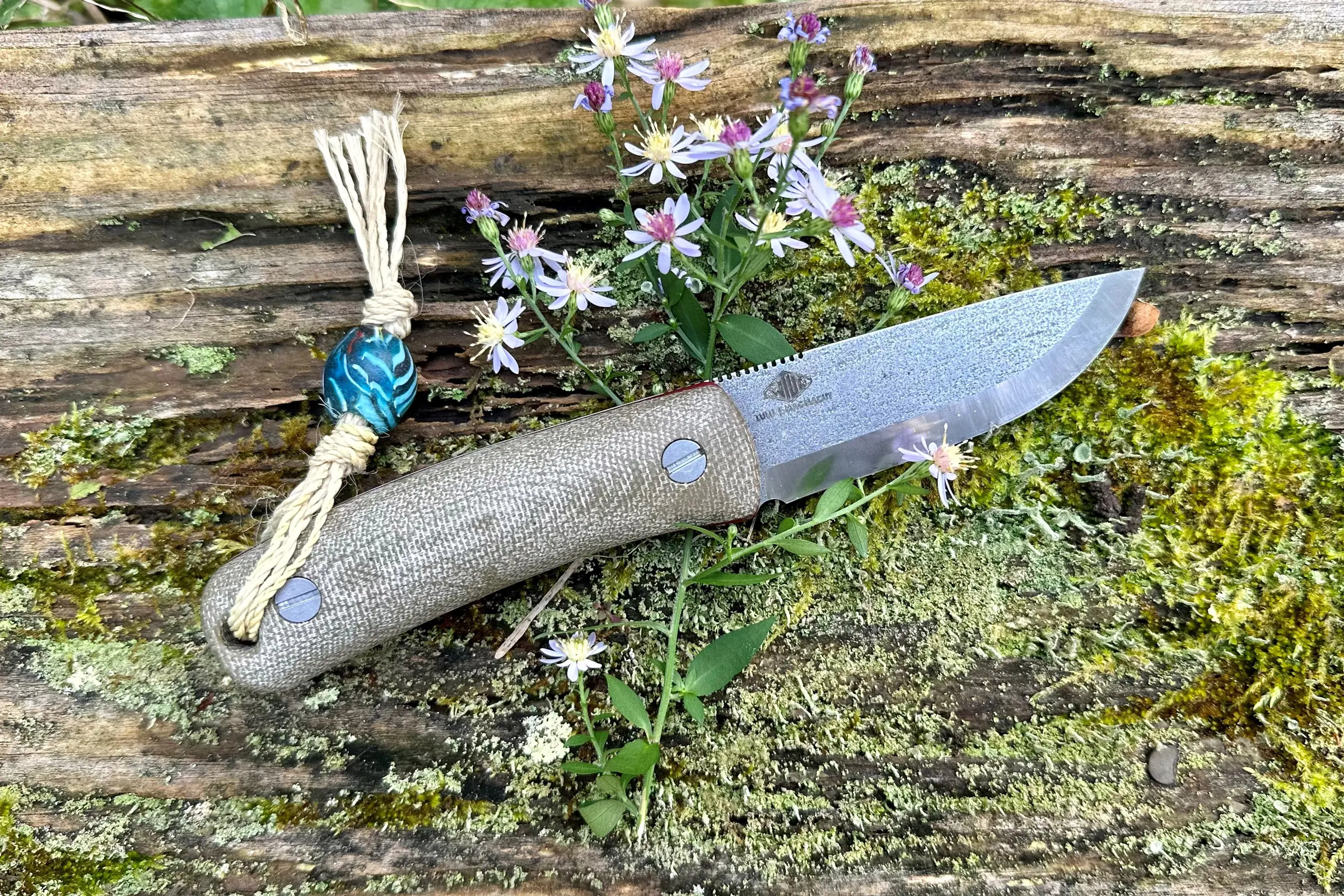



Case in point, MagnaCut steel and crossbar-style locks have been sprinkled all over the knife world. And for good reason — MagnaCut has proven to be the best EDC steel on the market. Every major (and some minor) knife maker has started using it. It spread like wildfire. Why? Because EDC knife users have high standards. Blade steel needs to be to meet those demands.
Benchmade created the Axis lock decades ago, and it’s the basis for every crossbar-style lock out there. It’s been out in the field as long as it has, and we’ve tested it numerous times, so we have a good feeling that it’s the best of the best.
That said, we still test everything we recommend. We still abuse the heck out of MagnaCut steel. We still see if we can get a crossbar-style lock to fail. There’s no going through the motions here. You trust us to give you tried and true information based on our professional experience with a product — and that’s what you’re going to get.
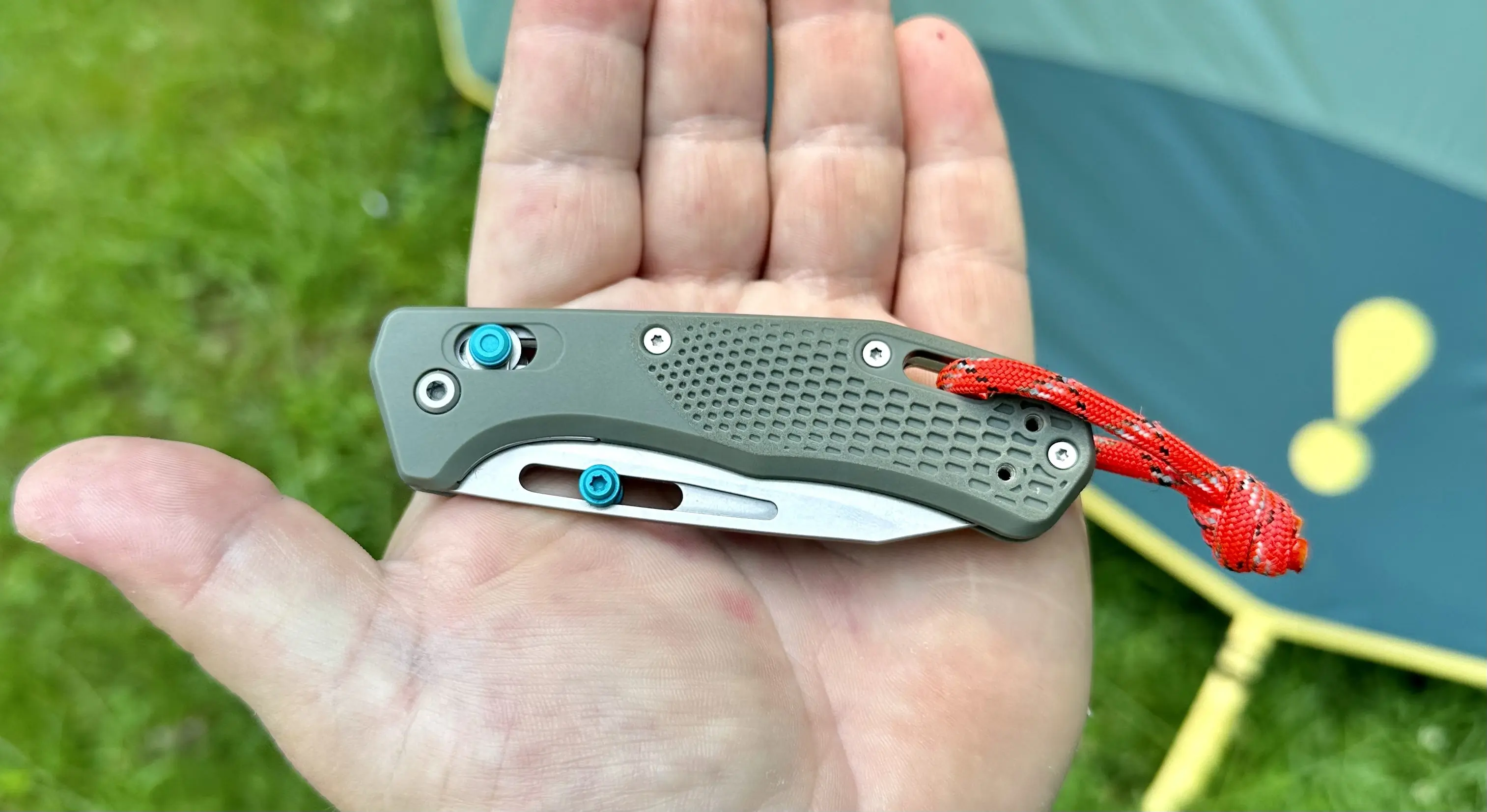



Testing History
For this year’s guide, we plucked Nick LeFort out of the group and had him tackle the task.
LeFort is an outdoor enthusiast, engineer, and knifemaker who has worked and played in the outdoor and knife industries for more than 20 years. He brings with him a wealth of knowledge about materials, engineering, manufacturing, and marketing and has nearly 30 years of experience in the outdoor world.
What’s more, he’s been testing and reviewing knives, tools, and gear for more than a decade. He has published over 50 articles for GearJunkie. He’s dedicated to the cause, has a lot to say, and wants to make sure you’re getting the best information you can from us.
Nick contributes to our other knife guides, including the best multitools and the best pocket knives.
Buyer’s Guide: How to Choose the Best Hiking and Backpacking Knife
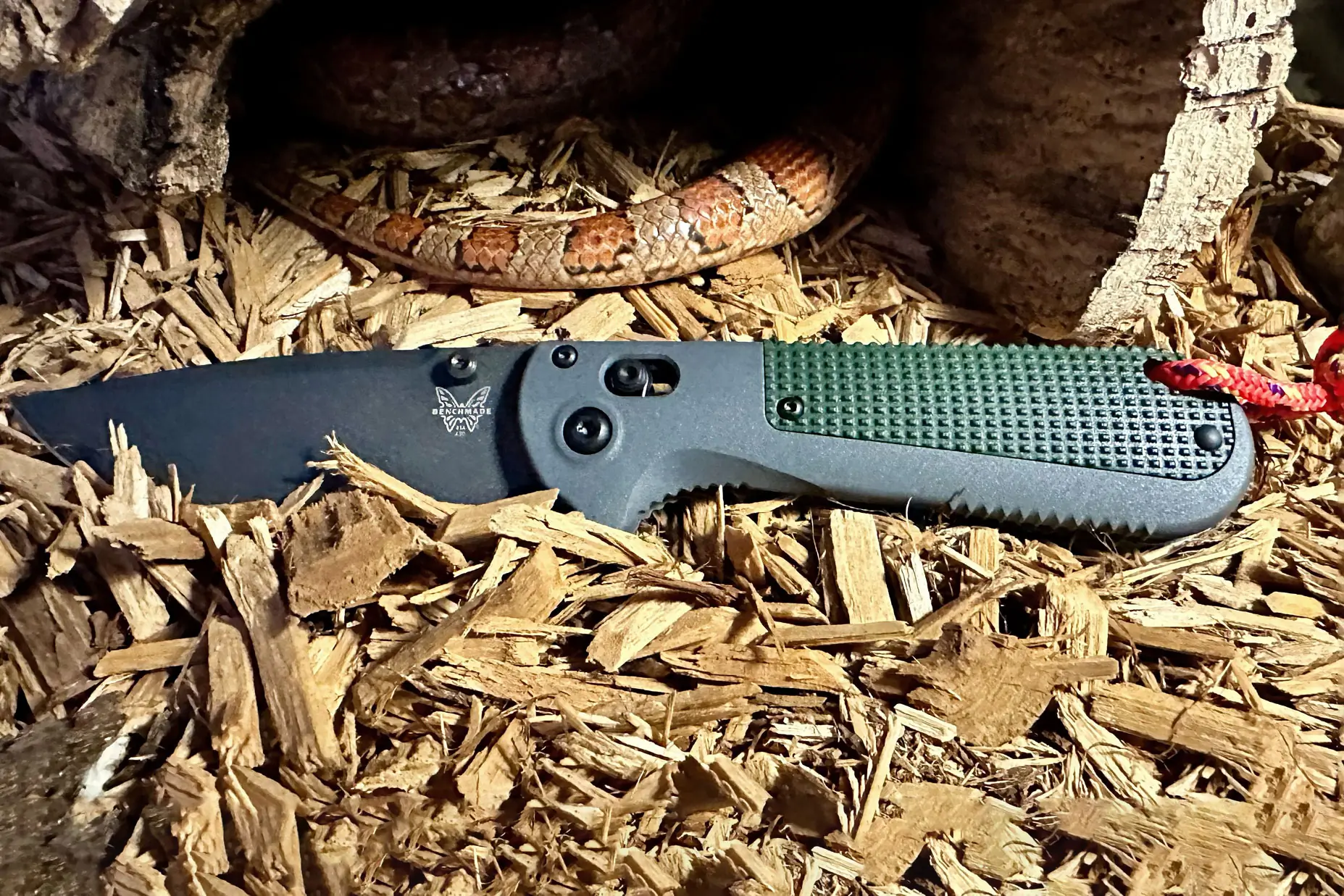



When it comes to knives, we can only take you so far. In the end, you need to choose a knife that’s right for you based on what you plan on doing with it, how much you want to spend, and how many knives you plan on owning (we recommend multiple). But there are a few key things to look for, especially in regards to a knife you plan on relying on for hiking and backpacking.
Knife Steel
The variety of knife blade steel and handle materials out there is pretty impressive. But, while go-to handle materials seem to have stabilized, there’s new steel coming out every year. The above selection of nine knives contains seven different knife steels. Our recommendation is to consider each steel on a case-by-case basis. Still, any good blade steel should meet or exceed the following requirements.
Corrosion Resistance
The last thing you want is your knife turning orange on you out in the field. Especially if you’re planning on using it to prepare food. All of the steel mentioned in this guide either has exceptional corrosion resistance or has been coated to eliminate the occurrence of rust.


Abrasion Resistance
Some people consider this property to be more form than function. But in all reality, if your blade gets scraped up, it may start chipping — which then could lead to blade failure.
Edge Retention/Ease of Resharpening
The worst knife you can carry is a dull one. That being said, you want to look for knife steels that either excel in edge retention or can be easily resharpened. You can learn more about specific knife steels here.
Handle Material
When it comes down to handle material, it’s all about grip. Ergonomics play a part in this as well, as it’s possible to find great handle material in a weird shape that will cause fatigue. If that’s the case, you won’t want to use the knife, and you’ll have wasted your money. These are some of the more preferred handle materials on the market today:
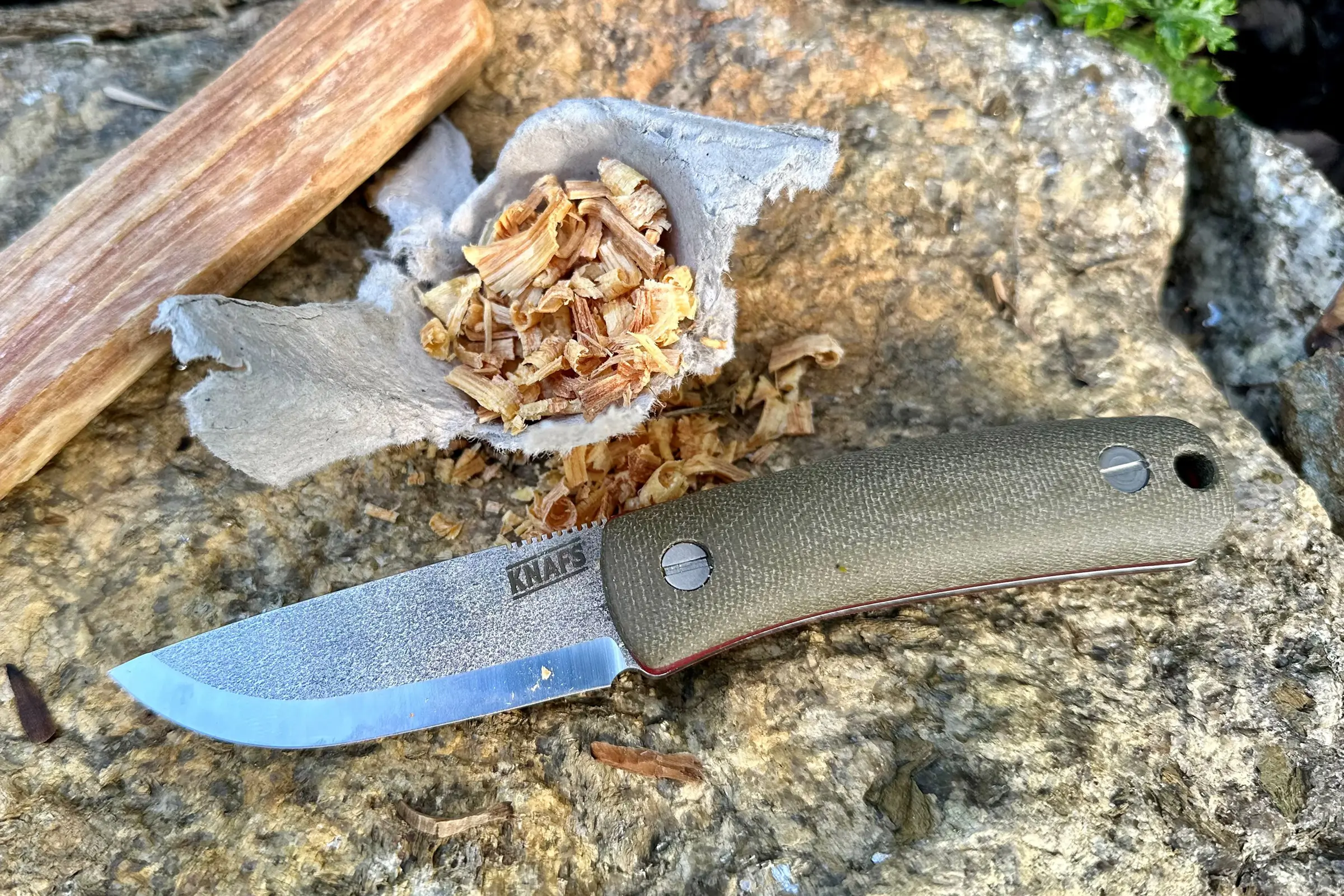



G10 & Micarta
G10 and Micarta are both extremely strong materials. Both excel in grip whether your hands are wet or dry — which is why these two materials are so popular with EDC, Survival, Tactical, and Bushcraft-style knives.
Nylon & Plastic
Nylon and plastic also make for great handle materials because they’re durable and lightweight, but they’re also generally textured. It’s this texturing and styling that increases grip on a knife made from these materials.
Note: Nylon and plastic handle scales can be called a litany of names. Some of the more popular names are FRN/Zytel (Fiber Reinforced Nylon), GRN (Glass Reinforced Nylon), GFN (Glass Filled Nylon), and Grivory (Injection Molded).
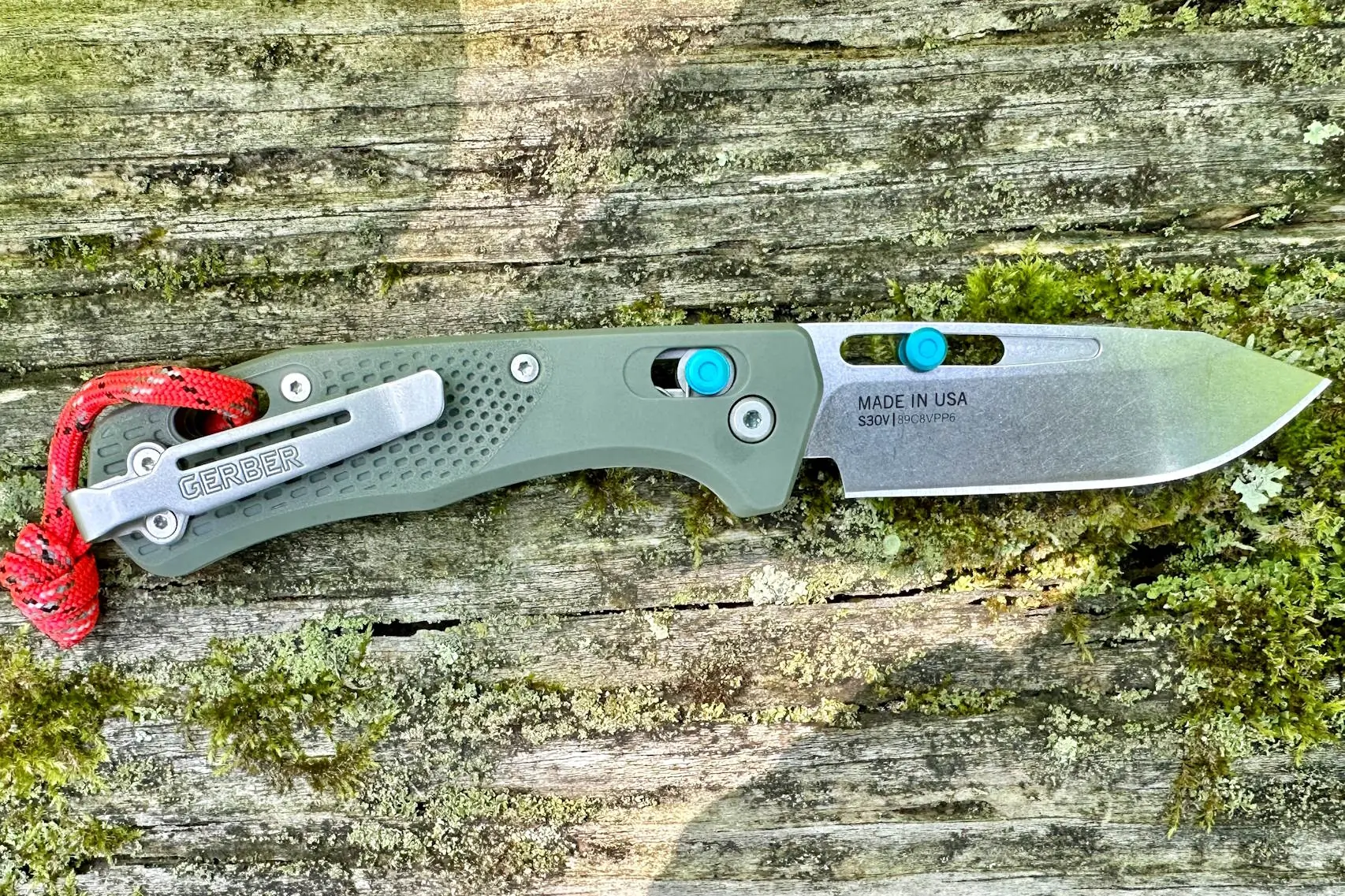



Carbon Fiber
A lot of folks think carbon fiber is just pretty to look at, but in all reality, this woven material is lightweight and strong. Depending on its composition, it could be considered the perfect balance between strength, weight, and durability. You can bet your bippy you’ll pay more for a knife with carbon fiber — but it’s worth it.
Aluminum & Titanium
Both aluminum and titanium are incredibly strong and lightweight materials, which make them great for knife handle scales. But where aluminum has become relegated to budget knives, the use of titanium is usually saved for premium and ultra-premium Knives. The only drawback to both of these materials is that they can be slippery when wet.


Ease of Use
Ease of use is a big deal when considering what knife is right for you. It can come in many forms from ergonomics, to lock design, to the hardware used to keep the knife together and in good functioning order. All in all, the last thing you want to do is struggle with or be uncomfortable using your knife.
Ergonomics
A good knife will feel right in your hand. From the shape of the handle scales to the overall thickness and even texturing, ergonomics can be the difference between you being confident with your knife or leaving it in your drawer at home. When you consider a knife, put it in your hand and give it a good squeeze. Then, push down hard on a hard surface. If everything feels right, that’s your next knife.


Lock Mechanism
Without fail, you will find yourself in a position where you need to rely on the lock on your knife more than you expected. Out of the six folding knives in this guide, four feature the crossbar-style lock mechanism, and a fifth has a button lock, which is similar in design to the crossbar lock.
In our time and experience, we have never seen one of those lock mechanisms fail without some outside force creating a major disruption in how the knife functions. Like a truck running it over. Additionally, a good liner lock won’t fail you either.
Pocket Clip
The right pocket clip will keep your knife in place in your pocket and will be easy to attach and remove. Generally, pocket clips are made from steel or titanium, are designed to retain their shape, and are around half the total length of the knife when they are closed. There are also shorter pocket clip and wire ones that are usually found on small to midsize knives and lightweight ones.


Ball Bearings
Ten years ago, you needed to pay $300 to get a knife with ball bearings in it, but now you can find them for under $100. Ball bearings assist in the opening and closing of a knife. In fact, there are some knives out there that are so fluid in operation — due to ball bearings — that they’re just as fast, if not faster than an automatic knife. They’re also legal in more places when compared to an auto.
Sheaths
In terms of fixed-blade knife sheaths, your biggest concerns — in terms of function — are sheath material, how it attaches to you or your pack, and if it’s easy to remove (and insert) the knife from.
Leather and Kydex are the two most popular knife sheath materials out there. Both can be easily attached to your belt and — depending on the mounting clip — your pack as well.
When considering how you’re going to carry the knife, you want to make sure that the sheath will sit on your belt low enough to clear the hipbelt of your pack, or if it can be easily attached to your pack straps.
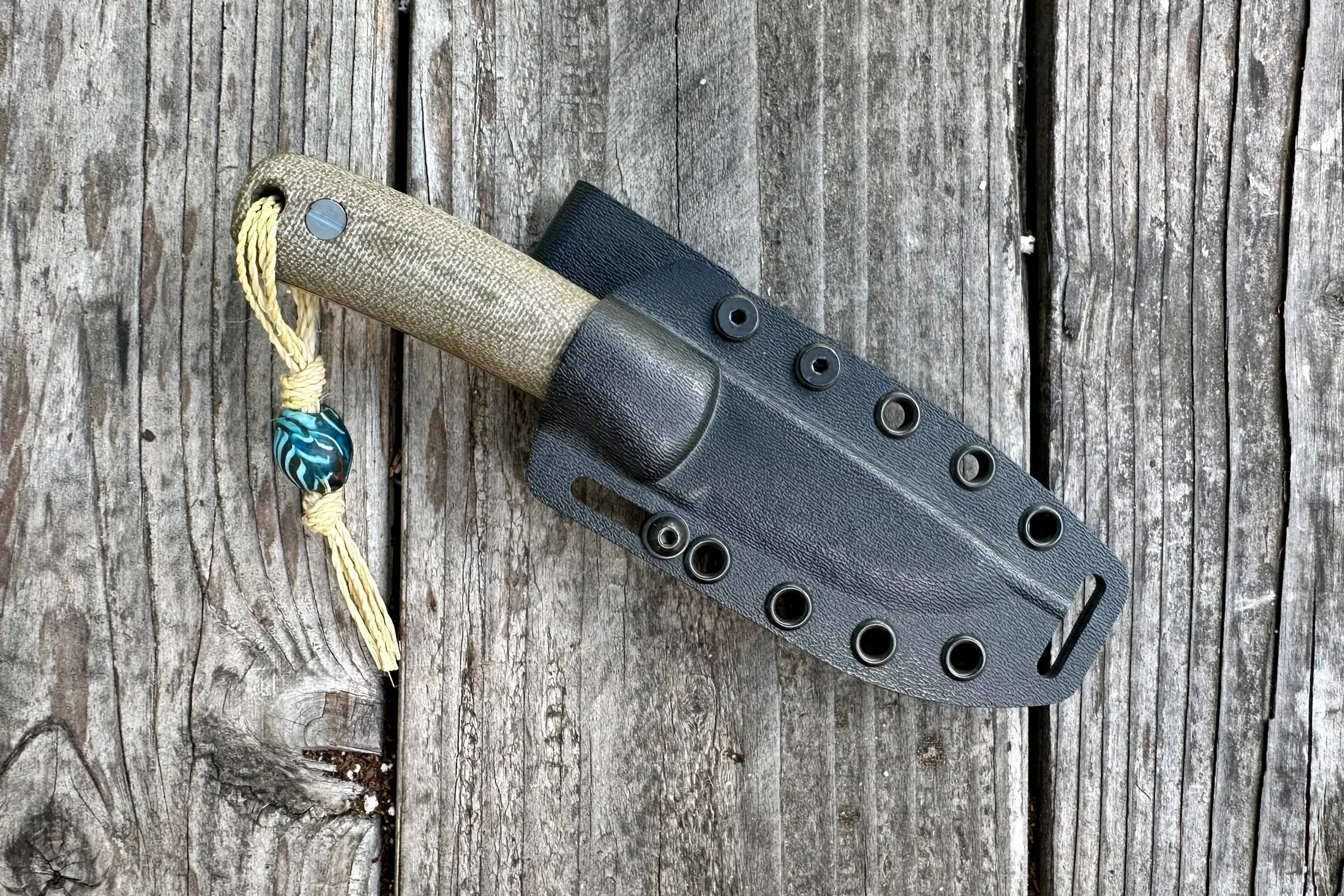



Maintaining and Caring for Your Knife
Your knife is only going to benefit you if it’s in good working order. With a fixed-blade knife, maintenance is generally focused on keeping the blade edge sharp and free of nicks or chips, as this can lead to failure. With a folding knife, it can get a little more complicated as there are moving parts that need to be maintained to make sure the knife is safe to use for years to come.
Here are some basic tips that you should get into a routine of doing to make sure your knife is reliable and ready for your next adventure.
Make Sure It’s Sharp!
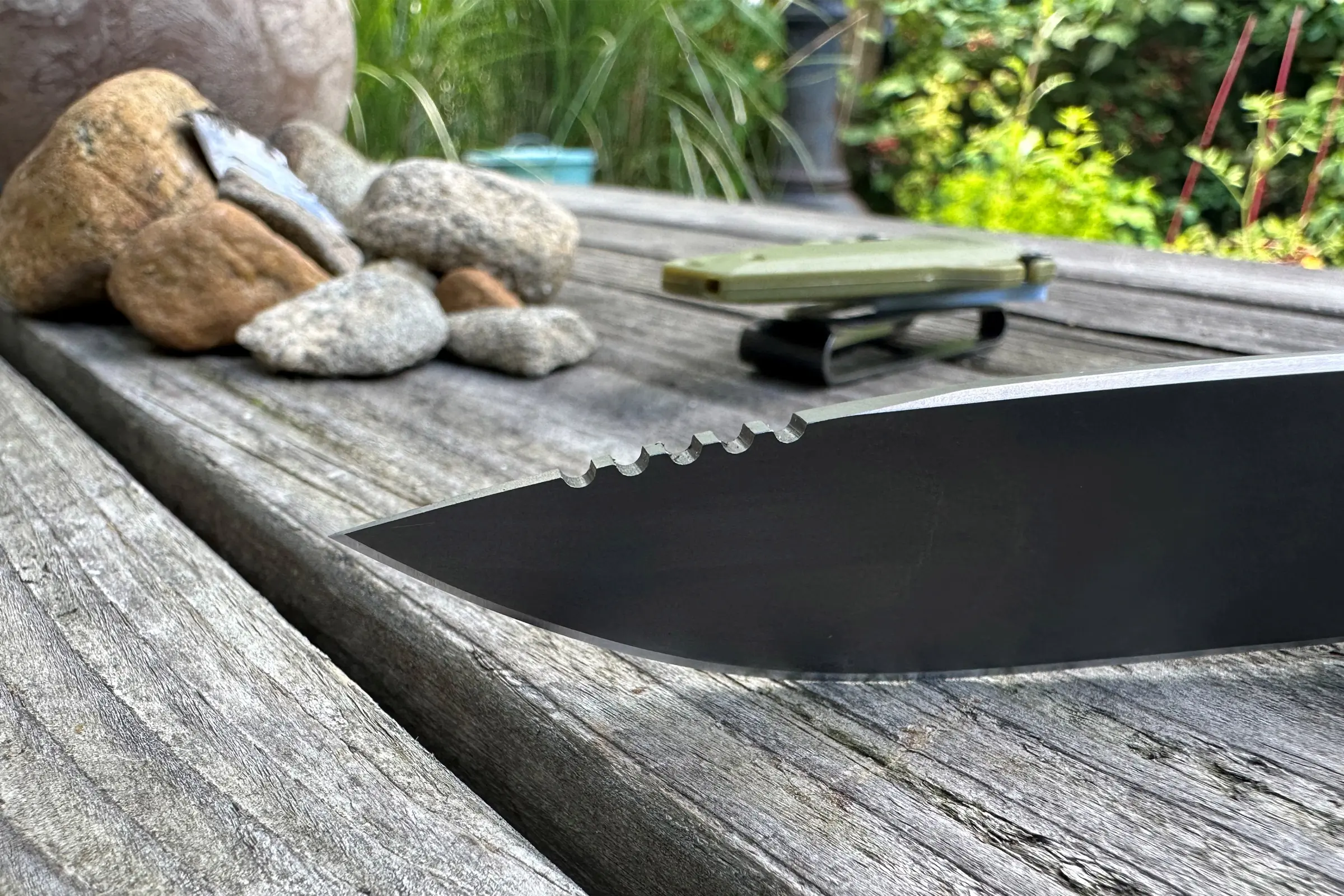



A dull knife isn’t any good to you. In fact, a dull knife can be dangerous. Thankfully, most knives on the market have steels that you can easily sharpen with the right sharpener and a little practice.
Throughout the testing process for this guide, we’ve relied on the Work Sharp Folding Field Sharpener. It’s not only small and lightweight, but we’ve found it incredibly effective for field honing and keeping our knives sharp and useful many miles from home. It’s also useful when touching up the edge of an axe or hatchet.
Keep It Clean and Lubricated
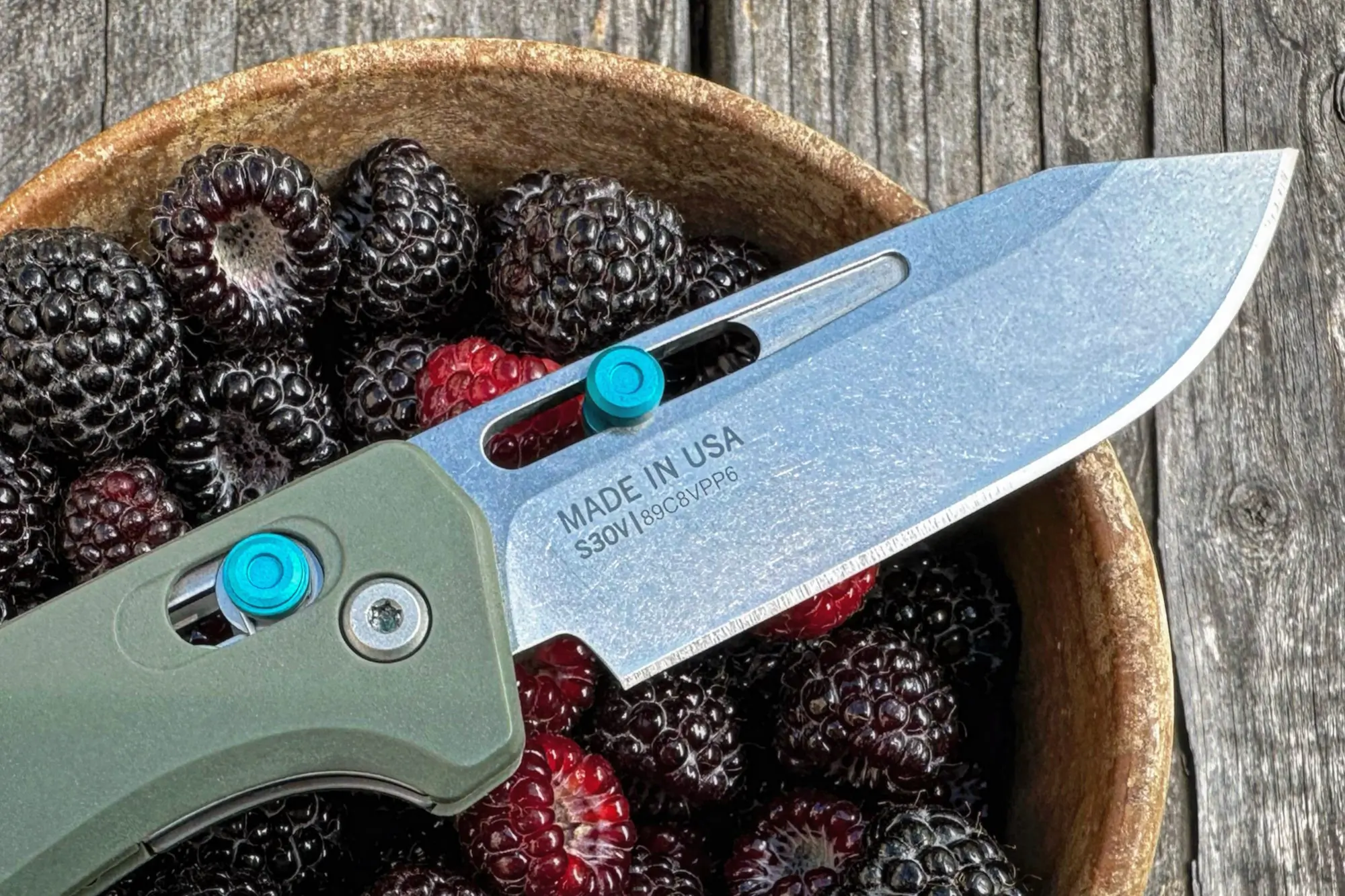



Water, dirt, and debris can all lead to your knife failing on you. For both fixed-blade and folding knives, make sure to wipe your blade down and that the handle cavity and sheath are dry and free of debris.
It’s perfectly fine to wash down your blade with dish soap and water, making sure to wipe it down and let it air dry. We also recommend coating your blade with any type of food-grade lubricant.
Regarding folding knives, you want to make sure that the lock mechanism and pivot are free of debris and in working order as well. These can be cleaned with a Q-tip soaked in rubbing alcohol, or canned air. You should always relubricate these areas after cleaning your knife.
If the knife manufacturer recommends a specific lubricant, it’s always best to use that.
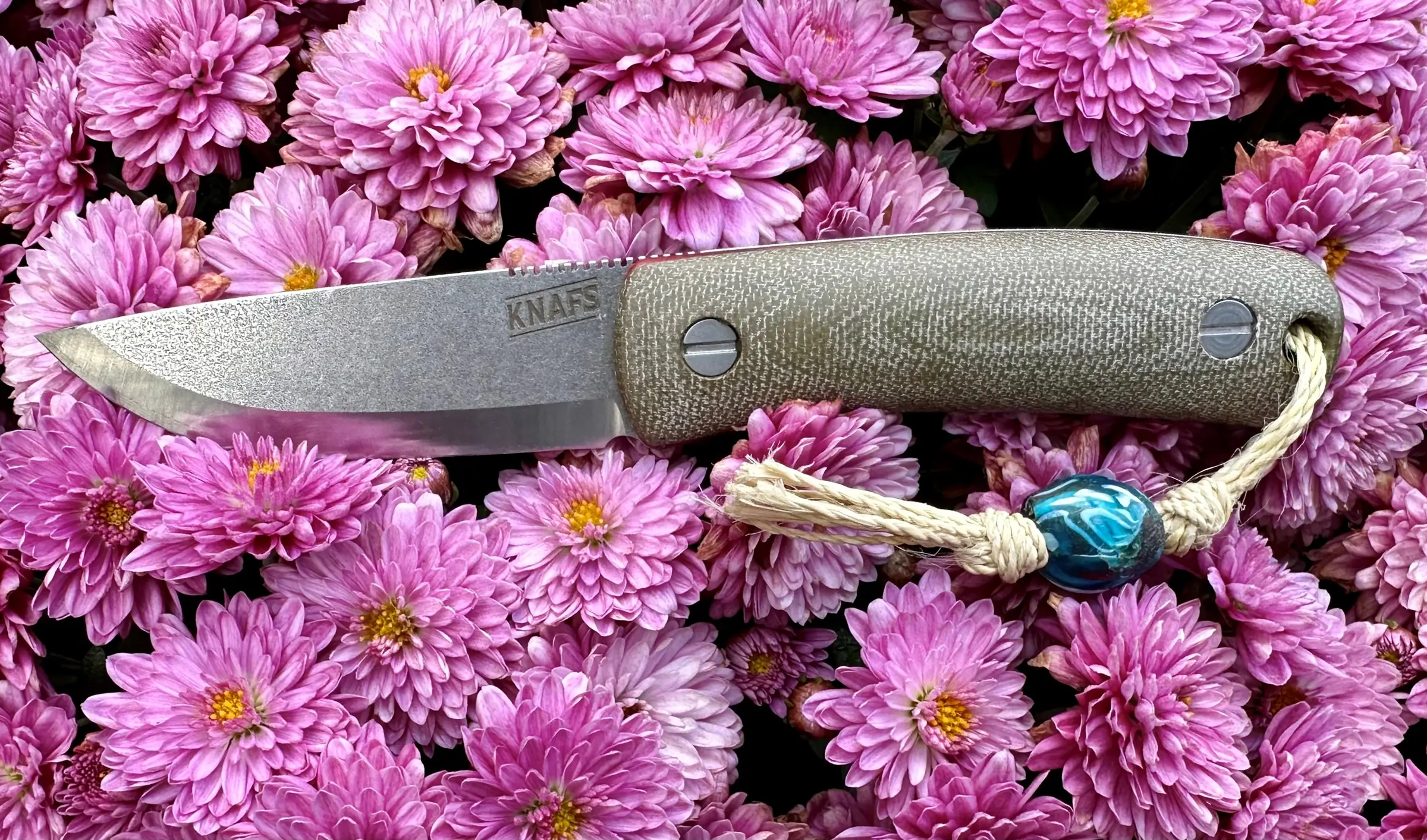



Price & Value
Knife pricing isn’t as cut and dry as most of us would like it to be. Yes, just like with any other consumer good, factors like materials, design, and function all play into the final price of a knife. However, as we’ve recently seen with a reliable and desirable $10 knife from Walmart, there are a lot of things going on behind the scenes that determine what we pay at the store for a knife.
How much material a knife manufacturer buys has a major impact on the price you pay for a knife. Material prices, in general, will fluctuate based on how much of each item is being bought overall. We’ve most recently seen this with MagnaCut, which became a popular steel seemingly overnight. As more brands adopted it in their knives, the overall price of the steel itself went down.
Another major factor is the country where the knife is made. Over the last decade, the quality of knives made by overseas brands like WE Knife and CIVIVI has improved beyond anything we could have imagined. However, the brand’s prices are still comparatively lower than similar knives made in North America.
This brings up the brand name factor. Knives from brands like Benchmade generally retail for more than similar knives from other brands. It’s not outside the realm of reason that you’re paying into the brand as much as you are the product. Some people refer to this as a “brand tax”. That said, in the case of Benchmade, you’re also buying free sharpening for life as well as a pretty significant lifetime warranty.
With that being said, we’re going to break knives down into the following three categories based on pricing in general. But, to be fair, in the production knife world, there are no clear and defining lines between Budget knives, Mid-tier knives, or Premium knives. The following is a generalization of what you can expect from each category.
Budget
Budget knives are usually made from more affordable materials. Does this make the knife any less useful? No. A budget knife should do everything you would expect it to. However, it may require more maintenance to keep it up and running.
On this list, the CIVIVI Yonder ($67) and CIVIVI Baby Banter ($70) are budget-level knives because they cost less than $100. Does this mean they’re any less of a knife than a mid-tier or premium knife? That depends on what you’re looking for in a knife.
In the case of these two knives, we think you’re getting a bargain. Nitro-V and 14C28N are great EDC steels that require little maintenance. Both knives feature G-10, which is durable and provides an excellent grip, and both are sized right for hiking and backpacking.
Mid-Tier
In the world of hiking and backpacking knives, most people carry budget or mid-tier options around
Mid-tier knives range from $100 to $200. They may use premium materials and almost always have a fine-tuned focus on ergonomics and weight. The Gerber Assert ($175) and the Grivory-handled Benchmade Bugout ($180-190) are prime examples of mid-tier knives.
You’ll note that the Assert has 14C28N, classified as budget steel, while the Bugout has S30V, considered premium steel — but both knives are similarly priced. This proves that knife pricing isn’t as clear-cut as you would hope. Factors like build, weight, form, and function all play a role in determining a knife’s retail price
Premium
The minute you read “premium,” you thought about Benchmade, didn’t you? Well, some of the Bugouts out there — especially the custom ones — can climb high enough to hit $300. With custom being designed by you and for you, we concur; that’s premium.
That said, the GiantMouse Jagt ($215) and Dauntless Manufacturing Hiker ($235) are the premiums on this list. Both feature MagnaCut steel and high-end handle material (Micarta and Ultem), but they’re also made by smaller companies that make smaller-batch knives. That’s not to say every premium knife comes from a boutique manufacturer, but in this case — they do.
With premium knives, aside from higher-end materials, you can expect a higher attention to detail and a more defined build. In fact, in these cases, these knives are hand-built. So, you could say that there are fewer automated processes going into building premium knives, which give them more of a personal touch.
Frequently Asked Questions
As a general rule, fixed-blade knives are stronger, require less maintenance, and are designed for more demanding tasks.
Folding knives tend to be more portable and easier to carry but have more moving parts which equates to more maintenance.
We don’t want to get too deep in the weeds here, because we think there is room for both. At some point, choosing between the two comes down to personal preference.
As we said earlier, for every knife you buy, consider what you’re buying it for.
Plain-edge blades have one continuous edge and they can be great for cutting, chopping, shaving, and slicing.
Generally, a serrated blade is a combination of a plain edge and serrations, usually towards the back of the blade near the pivot. The benefit of serrations on a blade is that it can be used for sawing through limbs and rope.
Overall, when choosing between a blade with a plain edge and one with serrations you need to take your needs into consideration. Serrations take up space on a blade edge and are more complicated to sharpen.
That said, if you like having options on your blade edge, this sharpener from Smith’s can get those serrations factory sharp within a few minutes by the fire.


The three major materials for fixed-blade knife sheaths are injection molded plastic, Kydex, and leather. All three have their merits, with Kydex and leather being the two real contenders, but it really boils down to the following:
Mounting: A sheath that can mount to multiple things (like your belt and your pack strap) can be a major bonus in terms of ease of use and accessibility. One that has a buckle that you can open and close so you don’t need to take off your belt or deconstruct your backpack is even better.
Where you are going: Leather is beautiful, but it doesn’t do so well in the elements. A wet knife sheath won’t dry easily as long as you remain outdoors with it. The universal, and durable, solution is Kydex. That said, if you’re hell-bent on a leather sheath — you can dry it at night on a stone by the fire. Just make sure to take the knife out first!
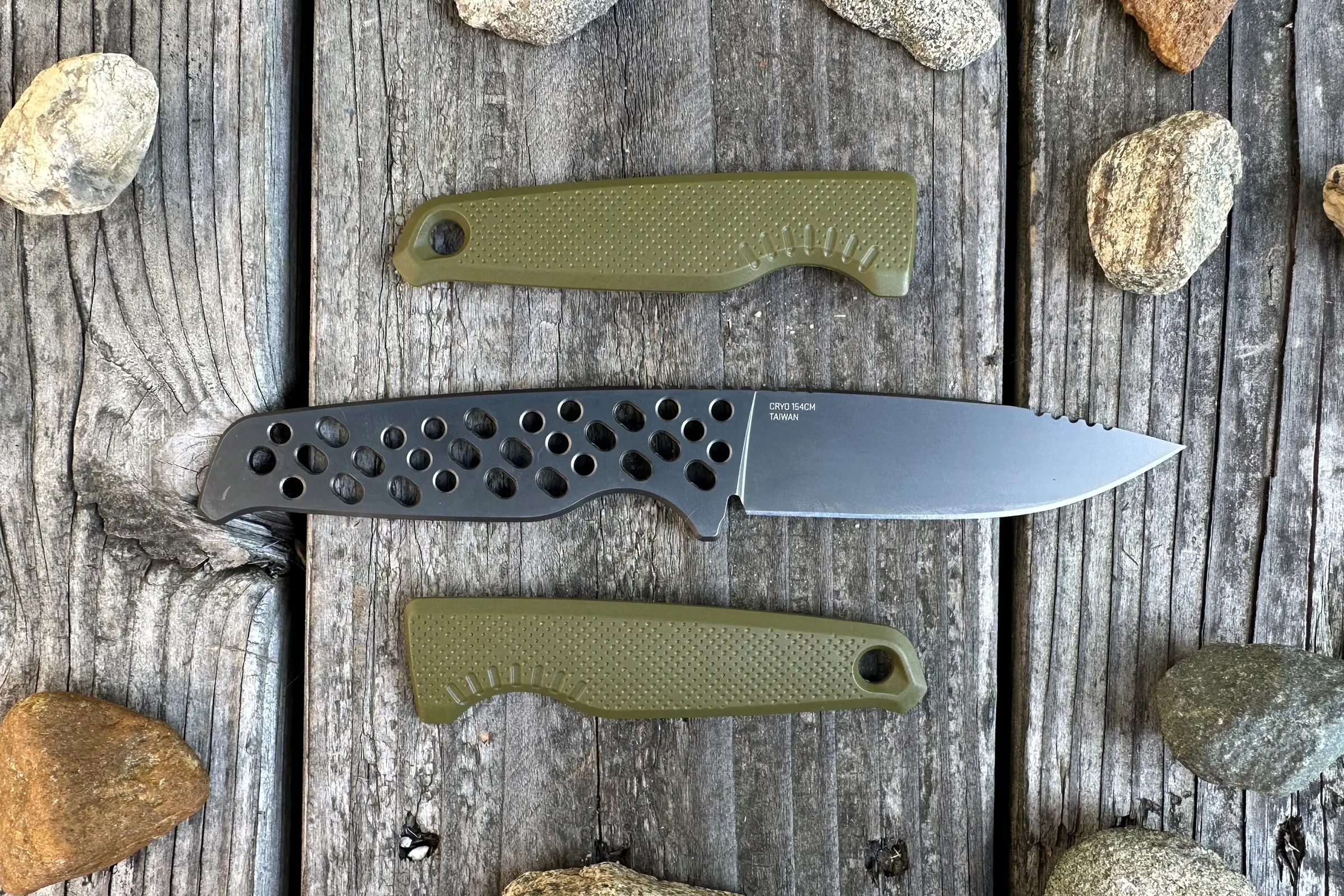



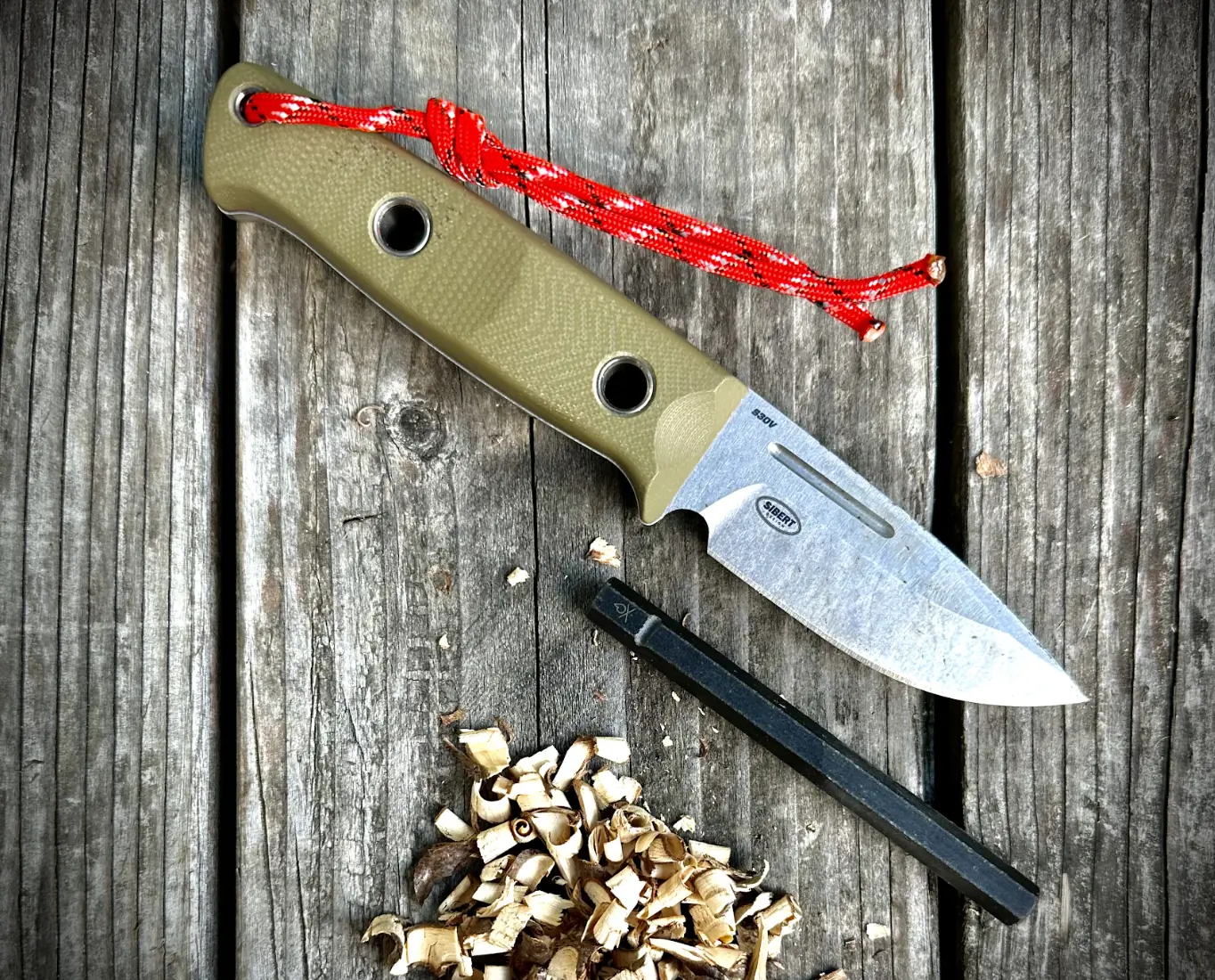

The Best Bushcraft Knives of 2025
Whether splitting logs or whittling by the fire, we’ve found the best bushcraft knives for every budget and use.


The Best Tactical Knives of 2025
Known by many names, a tactical knife generally refers to a hardworking, do-all blade. Here, we review the best folding and fixed-blade knives for every budget and use.
